APOSTOLIC PILGRIMAGE OF HIS HOLINESS OF PAUL VI TO WEST ASIA, OCEANIA AND AUSTRALIA
MASS AT THE «QUEZON CIRCLE»
HOMILY OF THE HOLY FATHER PAUL VI
Philippines, Manila Sunday, 29 November 1970
I Paul, the successor of Saint Peter, charged with the pastoral mission for the whole Church, would never have come from Rome to this far-distant land, unless I had been most firmly convinced of two fundamental things: first, of Christ; and second, of your salvation.
Convinced of Christ: yes, I feel the need to proclaim him, I cannot keep silent. «Woe to me if I do not preach the gospel!» (1 Cor . 9:16). I am sent by him, by Christ himself, to do this. I am an apostle, I am a witness. The more distant the goal, the more difficult my mission the more pressing is the love that urges me to it (Cfr. 2 Cor . 5:14). I must bear witness to his name: Jesus is the Christ, the Son of the living God ( Matth . 16: 16). He reveals the invisible God, he is the firstborn of all creation, the foundation of everything created. He is the Teacher of mankind, and its Redeemer. He was born, he died and he rose again for us. He is the centre of history and of the world; he is the one who knows us and who loves us; he is the companion and the friend of our life. He is the man of sorrows and of hope. It is he who will come and who one day will be our judge and - we hope -the everlasting fulness of our existence, our happiness. I could never finish speaking about him: he is the light and the truth; indeed, he is «the way, the truth and the life» ( Io . 14:6). He is the bread and the spring of living water to satisfy our hunger and our thirst. He is our shepherd, our guide, our model, our comfort, our brother. Like us, and more than us, he has been little, poor, humiliated; he has been a worker; he has known misfortune and been patient. For our sake he spoke, worked miracles and founded a new kingdom where the poor are happy, where peace is the principle for living together, where the pure of heart and those who mourn are raised up and comforted, where those who hunger and thirst after justice have their fill, where sinners can be forgiven, where all are brothers.
Jesus Christ: you have heard him spoken of; indeed the greater part of you are already his: you are Christians. So, to you Christians I repeat his name, to everyone I proclaim him: Jesus Christ is the beginning and the end, the Alpha and the Omega; he is the king of the new world; he is the secret of history; he is the key to our destiny. He is the mediator, the bridge, between heaven and earth. He is more perfectly than anyone else the Son of Man, because he is the Son of God, eternal and infinite. He is the son of Mary, blessed among all women, his mother according to the flesh, and our mother through the sharing in the Spirit of his Mystical Body.
Jesus Christ is our constant preaching; it is his name that we proclaim to the ends of the earth (Cfr. Rom . 10:18) and throughout all ages ( Rom . 9:5). Remember this and ponder on it: the Pope has come here among you and has proclaimed Jesus Christ!
In doing this I express also the second dynamic idea that brings me to you: that Jesus Christ is to be praised not only for what he is in himself; he is to be exalted and loved for what he is for us, for each one of us, for every people and for every culture. Christ is our Saviour. Christ is our greatest benefactor. Christ is our liberator. We need Christ, in order to be genuine and worthy men in the temporal order, and men saved and raised to the supernatural order.
At this point several questions present themselves. They are questions that torment our times, and I am sure that they are in your minds too. These questions are: Can Christ really be of any use to us for solving the practical and concrete problems of the present life? Did he not say that his kingdom is not of this world? What can he do for us? In other words, can Christianity give rise to a true humanism? Can the Christian view of life inspire a real renewal of society? Can that view harmonize with the demands of modern life, and favour progress and well-being of all? Can Christianity interpret peoples’s yearnings and identify with the tendencies special to your culture?
These questions are many, and we cannot answer them with one single formula which would take account of the complexity of the problems and the different needs of man, spiritual, moral, economic, political, ethnic, historical and social. Yet, as far as the positive and happy development of your social conditions is concerned, we can give a positive answer: Christianity can be salvation also on the earthly and human level. Christ multiplied the loaves also to satisfy the physical hunger of the crowds following him. And Christ continues to work this miracle for those who truly believe in him, and who take from him the principles of a dynamic social order, that is, of an order that is continually progressing and being renewed.
For example, Christ, as you know, constantly proclaims his great and supreme commandment of love. There exists no social ferment stronger and better than this. In its positive aspect it unleashes incomparable and unquenchable moral forces; in its negative aspect it denounces all forms of selfishness, inertia and forgetfulness which do harm to the needs of others. Christ proclaims the equality and brotherhood of all men: who but he has taught and can still effectively teach such principles which revolution, while benefitting from them, rejects? Who but he, we say, has revealed the fatherhood of God, the true and unassailable reason for the brotherhood of men? And whence comes the genuine and sacred freedom of man if not from human dignity, of which Christ made himself the teacher and champion? And who, if not he, has made available temporal goods, when he took from them the nature of ends in themselves and declared that they are means, means which must to some extent suffice for all, and means which are of less value than the supreme goods of the spirit? Who but Christ has planted in the hearts of his followers the talent for love and service on behalf of all man’s sufferings and needs? Who has proclaimed the law of work as a right, a duty and a means of providence? Who has proclaimed the dignity that raises it to the level of cooperation with and fulfillment of the divine plan? Who has freed it from every form of inhuman slavery, and given it its reward of justice and merit?
To you who are students and can well grasp these fundamental ideas and these higher values, I would say this: Today while you are challenging the structures of affluent society, the society that is dominated by technology and by the anxious pursuit of productivity and consumption, you are aware of the insufficiency and the deceptiveness of the economic and social materialism that marks our present progress. You are truly able to reaffirm the superiority, richness and relevance of authentic Christian sociology, based on true knowledge of man and of his destiny.
Workers, my message to you is this: While today you have become aware of your strength, take care that in the pursuit of your total rehabilitation you do not adopt formulas that are incomplete and inaccurate. These, while offering you partial victories of an economic and hedonistic nature, under the banner of a selfish and bitter struggle, may later increase the disappointment of having been deprived of the higher values of the spirit, of having been deprived of your religious personality and of your hope in the life that will not end. Let your aspirations be inspired by the vigour and wisdom that only the Gospel of the divine Worker can give you.
To you, the poor, I have this to say: remember that you have a supreme friend-Christ who called you blessed, the privileged inheritors of his kingdom. He personified himself in you, so as to turn to you every good person, every generous heart, every man who wishes to save himself by seeking in you Christ the Saviour. Yes, strive to raise yourselves: you have a right and duty to do so. Demand the help of a society that wishes to be called civilized but do not curse either your lot or those who lack sensitivity, for you know that you are rich in the values of Christian patience and redemptive suffering.
A final word, to you who are rich: remember how severe Christ was in your regard, when he saw you self-satisfied, inactive and selfish. And on the other hand remember how responsive and grateful he was when he found you thoughtful and generous; he said that not even a cup of cold water given in a Christian spirit would go unrewarded. Perhaps it is your hour: the time for you to open your eyes and hearts to a great new vision not dedicated to the struggles of self-interest, hatred and violence, but dedicated to solicitous and generous love and to true progress.
All this, dear sons and daughters, dear brothers and sisters, is part of the message of the Catholic faith. I have the happy duty to proclaim it here, in the name of Jesus Christ, our Lord and Saviour.
Copyright © Dicastero per la Comunicazione - Libreria Editrice Vaticana

First-ever papal visit to PH – a saintly heart for the poor
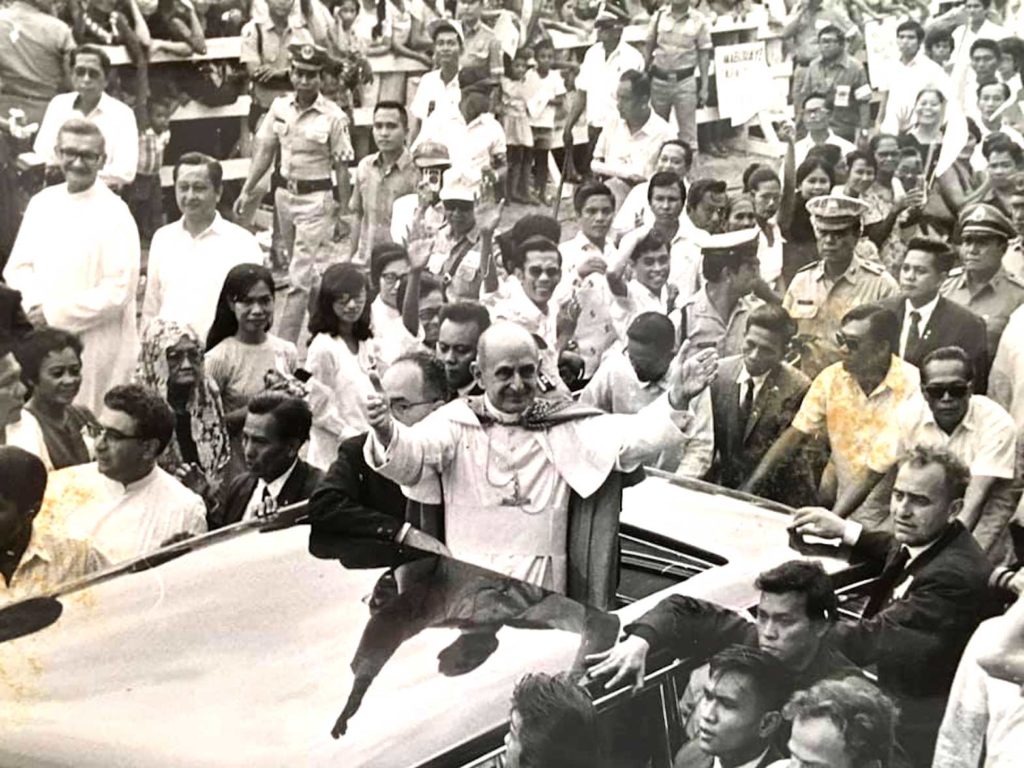
Pope Paul VI was the first pope to visit the Philippines. (Apostolic Nunciature – Manila)
The year 2020 commemorates the golden anniversary of a first in the history of the Church in the Philippines, that is, the first pontifical visit to “one of the most noble and great Catholic nations in the world.”
Fifty years ago, the misunderstood Pope of the Vatican Council II and Humanae Vitae (1968), Paul VI, now a canonized Saint, came in November 1970. He came like a silver lining of a dark cloud, giving hope to thousands of victims after Typhoon Yoling devastated the islands, much like Pope Francis’ visit in 2015 was after Typhoon Yolanda.
“I Paul, the successor of Saint Peter, charged with the pastoral mission for the whole Church,” came from Rome to this far-distant land to proclaim Christ to the Filipino nation, the Holy Father proclaimed during the Quezon Circle Mass on November 29, 1970.
Subscribe to our daily newsletter
By providing an email address. I agree to the Terms of Use and acknowledge that I have read the Privacy Policy .
First and foremost, he was concerned with the nourishment of the souls, cura animarum , which is the fundamental mission of every Vicar of Christ. In addition, he was also seriously concerned with the total development of every Filipino, particularly the less privileged. Why do I say this?
A couple of hours before he flew to Australia, he spent one Sunday afternoon wading through the muddy slums of Tondo. Although not part of the original papal itinerary, Paul VI paid a family visit to Carlos Navarro, his wife and eight children, and prayed with them.
How could we forget the saint, powerful yet prayerful, who entered their 5-feet-long-by-9-feet-wide shanty, located in a dumpsite outside the Don Bosco Training Center in Tondo, Manila, touching them in the head and blessing them?
The Vicar of Christ was not just bringing the good news of salvation but the hope of liberation for the poor, much like the One who sent him: “The Spirit of the Lord is upon me, because He has anointed me to proclaim good news to the poor” (Luke 4:18).
During the Marcos regime, the wala-nawala-binalewala (last-lost-least) sector was becoming the bleeding heart of Philippine society, wounded by the deadly spear of social inequality. The poor became poorer and the rich richer as the guilty ones declared free, while the innocent languished in detention or summarily executed.

Pope Paul VI visiting the poor in Tondo. (Apostolic Nunciature – Manila)
On the streets across the urban centers, more and more Filipinos slept the night with empty stomachs. Countless men and women were ravished by physical hunger, and countless children were undernourished, so that many of them dying in infancy. Many provinces, particularly in the Visayas and Mindanao, were condemned to underdevelopment, depression, and despondency.
It’s beyond external gestures. Like those of John XXIII, John Paul II, and Pope Francis, Paul VI’s heart was dedicated to the less privileged. If you slice their hearts into two, you’d find nothing there except God and the welfare of les miserables and los pobres !
The saintly Pontiff renounced the regal splendor of the papacy and then personally embraced the life of poverty. He ditched the triple tiara one year after his coronation in 1963, sold it to a group of American Catholics for $1 million and the money went to Mother Teresa of Calcutta. Today, the tiara is housed at the Basilica of the National Shrine of the Immaculate Conception in Washington, D.C.
In 1965, after his remarkable speech in New York, Paul VI gave to the United Nations two pieces of personal jewelry, an 8-carat gold pectoral cross and platinum ring with more than 75 carats of diamonds, full of hope that the proceeds from their sale ($1.9 million) at auction would contribute to the UN’s efforts to end human suffering.
Paul VI turned out to be a guiding star in the Catholic firmament, a Pontiff of amazing charity who blazed the trail in order to reach out to the poor, thus showing to the world the beautiful Face of God.
Saint Paul VI, pray for the Filipino nation. Amen!
Jose Mario Bautista Maximiano ( facebook.com/josemario.maximiano ) is the author of MDXXI: 500 YEARS ROMAN CATHOLIC (Claretian, 2020) and THE CHURCH CAN HANDLE THE TRUTH (Claretian, 2017).
For feedback, complaints, or inquiries, contact us.
Disclaimer: comments do not represent the views of inquirer.net. we reserve the right to exclude comments which are inconsistent with our editorial standards. full disclaimer.
INQUIRER CHANNELS
- Entertainment
- Job Openings
THE INQUIRER COMPANY
- About INQUIRER.net
- About the INQUIRER
- User Agreement
- Link Policy
- Privacy Policy
- Article Index
- Hinge Inquirer
- Cebu Daily News
- Motion Cars
We use cookies to ensure you get the best experience on our website. By continuing, you are agreeing to our use of cookies. To find out more, please click this link.
9 Surprising Facts About Papal Visits To The Philippines
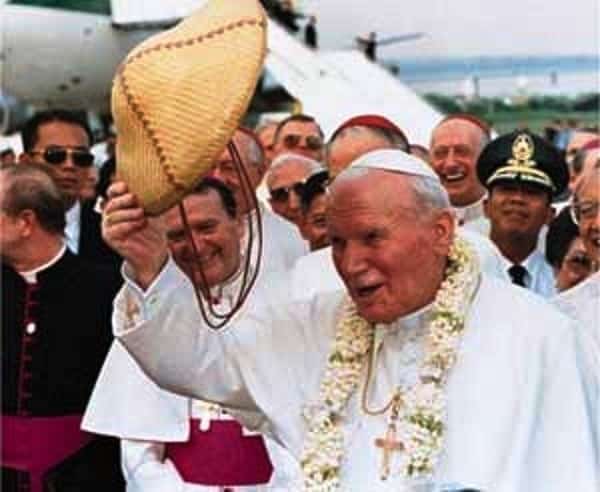
In this predominantly Roman Catholic country, expect the majority of Filipinos to go wild at the impending arrival and presence of the spiritual leader of the 1.2 billion Catholics, the amazingly affable and austere Pope Francis.
Also Read: 9 Astonishing Miracles in Philippine History
As we all know, this would be the fourth papal visit to the Philippines: Pope Paul VI visited in 1970, and Pope John Paul II did it twice in 1981 and 1995. And as always, here are some interesting facts about the prior papal visits to the Philippines.
1. Before He Became Pope, John Paul II Had Already Visited The Philippines.
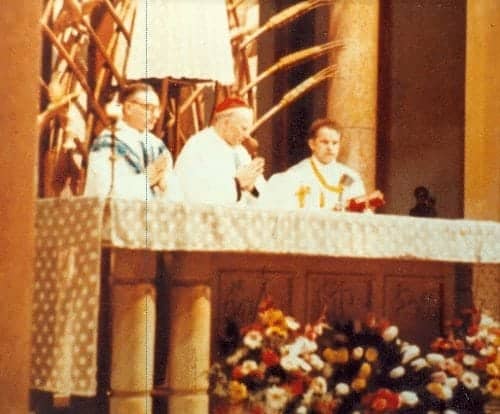
Aside from his famous 1981 and 1995 visits to the Philippines, Pope John Paul II already came to the country in 1973 when he was still the relatively-unknown Karol Jozef Cardinal Wojtyla, the Archbishop of Krakow.
Arriving in the country for a stopover, the future pope hardly attracted attention when he celebrated Mass in Baclaran Church in Parañaque. Yet to those who were privy to the Vatican’s internal affairs, they already had a gut feeling that Wojtyla would someday be pope (they were correct).
Also Read: 7 Facts They’re Not Telling You About Philippine Arena
Christer Nyblom, a Swedish journalist attached to Wojtyla’s entourage at the time, also noted how the pope-to-be loved to indulge on Philippine mangoes and San Miguel Pale Pilsen during his first brief stay here in the Philippines.
2. A Bolivian Painter Tried To Kill Pope Paul VI.
Disguising himself as a priest, Benjamin Mendoza, an eccentric Bolivian painter, managed to reach the pope as he was being welcomed in the airport and stab him twice in the chest with a 13-inch knife before being finally subdued and carried off by security forces. During his arraignment and trial, he rambled on and off about only inflicting a “symbolic death” on the pope and that he never meant to actually kill him. He eventually spent four years inside a local prison before he was deported back to his homeland.
Meanwhile, President Marcos was said to have credited himself with saving the pope’s life by giving a “karate chop” to Mendoza’s knife-wielding arm. However, his life-saving role was never confirmed by the pope’s entourage.
Recommended Article: 13 Intriguing Facts You Might Not Know About Ferdinand Marcos
Pope Paul VI himself never spoke about the attack in his lifetime and instead forgave Mendoza. He also denied he had been physically injured although, after his death, the Vatican revealed he had a chest wound which would have killed him had it not been for the undershirt he was wearing during the attack. In his silence, Pope Paul VI ironically saved Mendoza from being executed.
3. The Plot To Kill Pope John Paul II With A Suicide Bomber.
Although we’ve already discussed the Bojinka Plot which was the precursor to the 9/11 attacks, we’ll go into the further details on how the plotters planned to assassinate Pope John Paul during his 1995 visit.
Read More: Philippine police discovered clues of 9/11 attacks, 6 years before it happened
Supposedly, the terrorists would employ a suicide bomber disguised as a priest to come near the Popemobile as it made its way to Makati City’s San Carlos Seminary and assassinate the pope. However, killing the pontiff would be a mere diversion for the real goal of the terrorists—to hijack several planes and either detonate or ram them into several US buildings including CIA headquarters and the Pentagon.
Unfortunately for the terrorists, their cover was blown when an accidental fire in the apartment they had been renting attracted the attention of authorities, resulting in the arrest of three of their principal members and the dissolution of the plot.
4. Pope John Paul II Would Have Visited The Philippines A Fourth Time.
If he didn’t have become sickly during his final years, Pope John Paul II would have visited the Philippines for the fourth time (we counted his visit as an archbishop).
The pontiff was supposed to have been in the country for the World Meeting of Families back in 2003 but had to back out due to his frail health. On the other hand, his successor, the conservative Pope Benedict XVI turned down three invitations to go to the Philippines in 2010.
READ: 7 Myths About Spanish Colonial Period Filipinos Should All Stop Believing
5. Two Popemobiles Are 100% Proudly Filipino-made.
When Pope John Paul II came to the Philippines twice, he used Popemobiles (the unofficial name of the vehicles used by popes for outdoor appearances) that were designed and created exclusively by Filipinos.
For the first visit, Sarao Motors created a customized Popemobile designed from a jeepney. As for the second visit, Pope John Paul II rode in a bulletproof pick-up truck designed by Francisco Motors.
Also Read: 5 Coolest Pinoy Inventions You Haven’t Heard Of
At the time of his second appearance, security measures had already been tightened due to a failed assassination in St. Peter’s Square in 1981. A rumored second attempt (the Bojinka Plot) against the pontiff in the Philippines also spurred the designers to make the vehicle as safe as possible, hence why bulletproof enclosures were placed on the vehicle.
6. Pope John Paul II Criticized President Marcos In Front Of The World.
In a time when criticizing President Ferdinand Marcos would have meant certain death, Pope John Paul II did it anyway, and in front of the iron-fisted ruler himself.
Although Marcos had already lifted martial law prior to the papal visit, he still practically retained his dictatorial powers. During a press conference in Malacañang Palace and with the president sitting beside him, the pope minced no words as he candidly spoke about how there could never be a justification for violating someone’s human rights or trampling on his dignity.
Also Read: 10 Lesser-Known Photos from Martial Law Years That Will Blow You Away
His frankness caused Marcos to abandon his carefully-prepared speech and apologize to the pope for what he described as “petty and small” conflicts between the church and the state. After talking down Marcos, the pope flew to Negros and essentially repeated his speech due to what he perceived as the inhumane conditions tens of thousands of “sacadas” (sugarcane workers) were experiencing at the expense of the few hacienderos who controlled the province.
7. It wasn’t just President Marcos whom Pope John Paul II criticized.
His wife, Imelda—who had by then gained a reputation as a free-spending First Lady—also incurred papal criticism when she commissioned the building of the Coconut Palace (yes, the very same Coconut Palace which now serves as the official residence of the Vice President).
READ: 9 Surprising Things You Didn’t Know About Imelda Marcos
At the time of its construction, the Palace cost the country P37 million pesos —a humongous amount given the sorry state the country was in at the time. The pope must have agreed too because he refused to stay inside the Palace he described as ostentatious and instead resided elsewhere for the duration of his 1981 visit.
8. Pope Paul VI Also Visited After A Typhoon.
Just like Pope Francis, Pope Paul VI’s visit also came after a powerful typhoon named Yoling devastated the Philippines.
Overcoming the protests and reservations of the Marcos government, the pope spent a Sunday afternoon wading through the mud-riddled slums of Tondo and ministering to the residents. He also spent more than an hour staying inside the shack of a family with ten children just to talk to them.
Recommended Article: 10 Haunting Last Pictures Taken in Philippine History
At the end of his tour, Pope Paul VI was said to have been deeply moved by the poor people’s plight and delivered a stirring speech calling on the government and the local Church to recognize their worth as human beings and uplift their lives. His successor, Pope John Paul II, would also visit Tondo in 1981 where he would invoke his famous “First Beatitude” speech.
9. Two Papal Gifts Are Landmarks In Luneta Park.
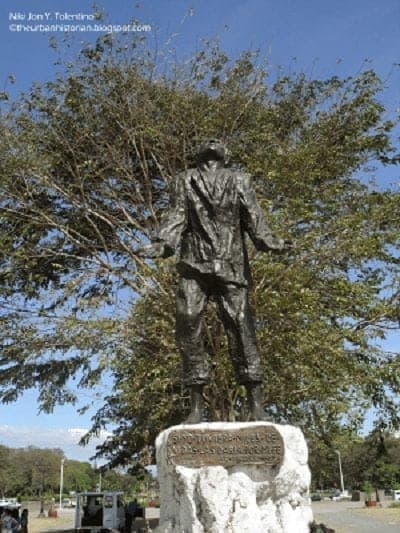
Unbeknownst to many, two landmarks in Luneta Park were gifts by the two visiting popes when they visited the country.
The first, a four-decades-old Narra tree, was personally planted by Pope Paul VI in 1970. The second, a statue of St. Lorenzo Ruiz and which can be located in front of Pope Paul VI’s tree, was donated by Pope John Paul in 1981 to commemorate the beatification of the saint. Not only that, but he also planted his own Narra tree.
Also Read: 22 Things We No Longer See in Manila
Unfortunately, park attendants have had to remove the markers on the papal trees to dissuade devotees from damaging them.
Aguilar, M. (2015). The Popemobile: an 80 year history . AutoIndustriya.com . Retrieved 14 January 2015, from http://goo.gl/Hca3sm
Aning, J. (2012). Vatican City can fit in Rizal Park . Inquirer.net . Retrieved 14 January 2015, from http://goo.gl/YiZqW3
Bangor Daily News,. (1979). Pope Paul VI was wounded in 1970 attack, p. 21. Retrieved from http://goo.gl/FYNkzH
Bombo Radyo Philippines,. (2015). Papal gifts ng 2 Pope: Narra tree, statue sa Luneta . Retrieved 14 January 2015, from http://goo.gl/1iTGsi
Cal, B. (2014). Pope John Paul II: Soft spot for Filipinos . Manila Standard Today . Retrieved 14 January 2015, from http://goo.gl/5n0gR8
Kamm, H. (1981). Pope, with Marcos beside him, delivers human rights talk. The New York Times . Retrieved from http://goo.gl/rPBt35
Laytner, R. (2012). Benjamin Mendoza . Edit International . Retrieved 14 January 2015, from http://goo.gl/p591KE
Murphy, D. (2010). Typhoon ‘Yoling’ and Pope Paul VI . Inquirer.net . Retrieved 14 January 2015, from http://goo.gl/721Rzr
Ocala Star-Banner,. (1981). Man Who Stabbed Pope Paul VI Still Roams The World, p. 9. Retrieved from http://goo.gl/xQuxgE
Pimentel, B. (2015). When an assassin tried to kill a Pope in Manila . Inquirer.net . Retrieved 14 January 2015, from http://goo.gl/MSauHq
Sebastián, R. (2014). John Paul II’s “least known” visit to the Philippines . CBCP News . Retrieved 14 January 2015, from http://goo.gl/wNUjmw
Tuazon, J. (2011). Revered Popemobile to make the rounds of PHL churches . GMA News Online . Retrieved 14 January 2015, from http://goo.gl/TDWm5Q
Written by FilipiKnow
in Facts & Figures , History & Culture , Politics & Religion
Last Updated January 21, 2022 01:36 PM
FilipiKnow strives to ensure each article published on this website is as accurate and reliable as possible. We invite you, our reader, to take part in our mission to provide free, high-quality information for every Juan. If you think this article needs improvement, or if you have suggestions on how we can better achieve our goals, let us know by sending a message to admin at filipiknow dot net
Browse all articles written by FilipiKnow
Copyright Notice
All materials contained on this site are protected by the Republic of the Philippines copyright law and may not be reproduced, distributed, transmitted, displayed, published, or broadcast without the prior written permission of filipiknow.net or in the case of third party materials, the owner of that content. You may not alter or remove any trademark, copyright, or other notice from copies of the content. Be warned that we have already reported and helped terminate several websites and YouTube channels for blatantly stealing our content. If you wish to use filipiknow.net content for commercial purposes, such as for content syndication, etc., please contact us at legal(at)filipiknow(dot)net
- COVID-19 Full Coverage
- Cover Stories
- Ulat Filipino
- Special Reports
- Personal Finance
- Other sports
- Pinoy Achievers
- Immigration Guide
- Science and Research
- Technology, Gadgets and Gaming
- Chika Minute
- Showbiz Abroad
- Family and Relationships
- Art and Culture
- Health and Wellness
- Shopping and Fashion
- Hobbies and Activities
- News Hardcore
- Walang Pasok
- Transportation
- Missing Persons
- Community Bulletin Board
- GMA Public Affairs
- State of the Nation
- Unang Balita
- Balitanghali
- News TV Live

REWIND: Looking back at previous papal visits in the Philippines

Browse past isues
Help the mission
Support the mission
Get in touch
- World Mission
Historical First Papal Visit
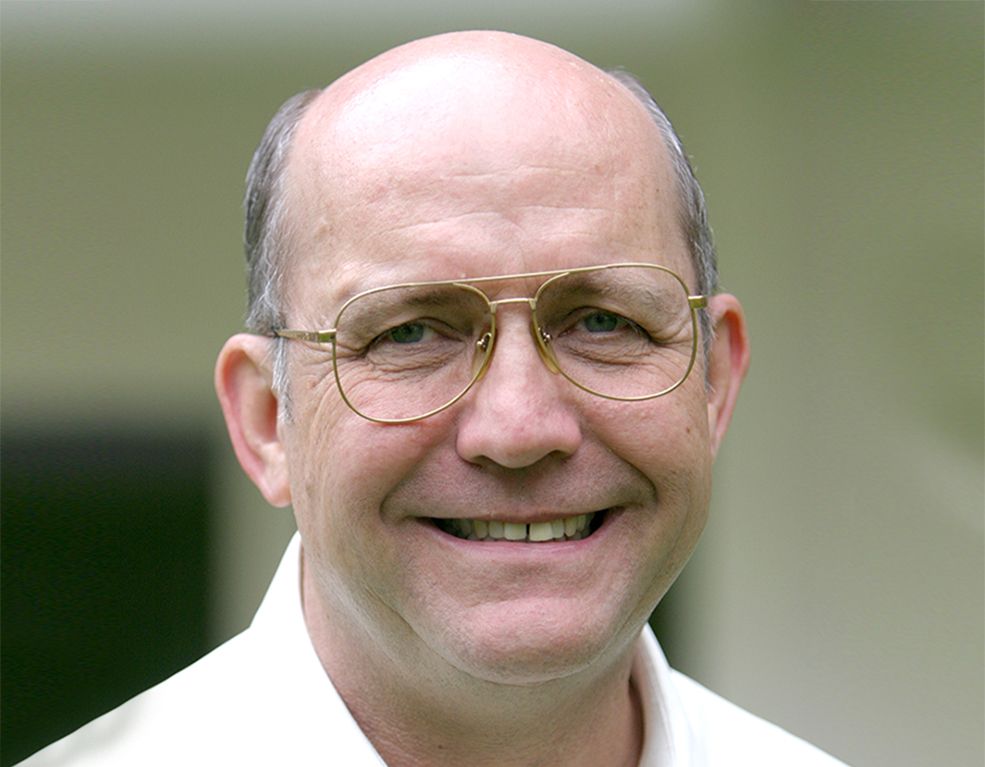
INTRODUCTION
- James H. Kroeger | Maryknoll Missionary
SHARE THE WORD
PUBLISHED ON
- October 2021
On his arrival, Paul VI noted his happiness in visiting the Philippines: “Here we are in the Philippines, in this great land so dear to our heart…. We express our affectionate greeting, and our great joy at having been given the grace to come to you and our deep desire to proclaim our attachment to your people who, in the course of history, have given proof in such a wonderful way of the depth of their faith.”
After the welcome ceremonies, the first stop of Pope Paul VI was the Manila Cathedral. He spoke affectionate words: “What a great joy it is for the Pope to see you all gathered here in this sacred place of prayer. Our first wish is to render heartfelt homage to the generations of missionaries who, from the first beginnings, have built up this admirable Christian community of the Philippines.”
Proclaiming Christ. On November 29, 1970 the Pope journeyed to the Quezon Memorial Circle for a public Mass. He remarked: “I, Paul, the successor of Saint Peter, charged with the pastoral mission for the whole Church…. [am] convinced of Christ: yes, I feel the need to proclaim him. I cannot keep silent. ‘Woe to me if I do not preach the Gospel.’ (1 Cor. 9:16) I am sent by him, by Christ himself, to do this. I am an apostle. I am a witness…. I must bear witness to his name…. He is the companion and the friend of our life.”
“Jesus Christ: you have heard him spoken of; indeed, the greater part of you are already his; you are Christians. So, to you, Christians, I repeat his name; to everyone I proclaim him…. I have the happy duty to proclaim … the name of Jesus, our Lord and Savior.”
Visiting the Poor. Paul VI also visited the Tondo district of Manila where many of the city’s slum dwellers live. Speaking to the crowds, he said: “I am head of the Catholic Church and its servant and I feel it my duty to proclaim here before you that the Church loves you who are poor.”
Then the Pope added: “What does it mean to say that the Church loves you? It means that the Church recognizes first of all your dignity as human beings, as children of God…. She recognizes, moreover, that preference is due to you, because your needs are many.” Succinctly stated: as the Church-in-mission, we are called to both proclaim Christ and generously serve the poor and needy!
Share Your Thoughts
All comments are moderated
From The Same Issue
The articles and content about this issue
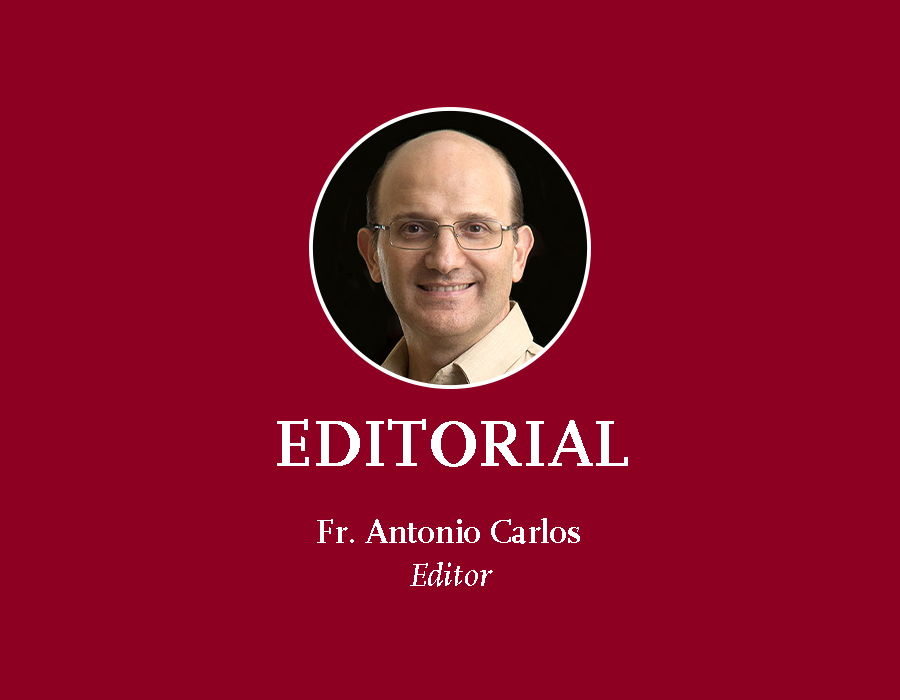
Mission Of Compassion
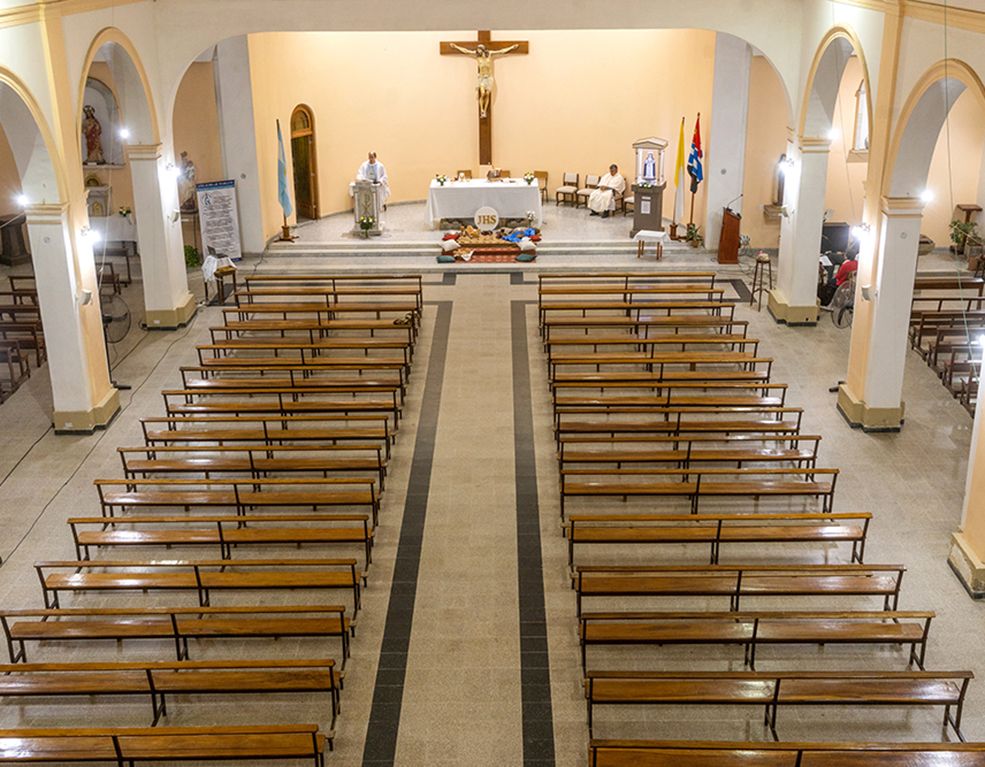
Turning A Blow Into A Blessing
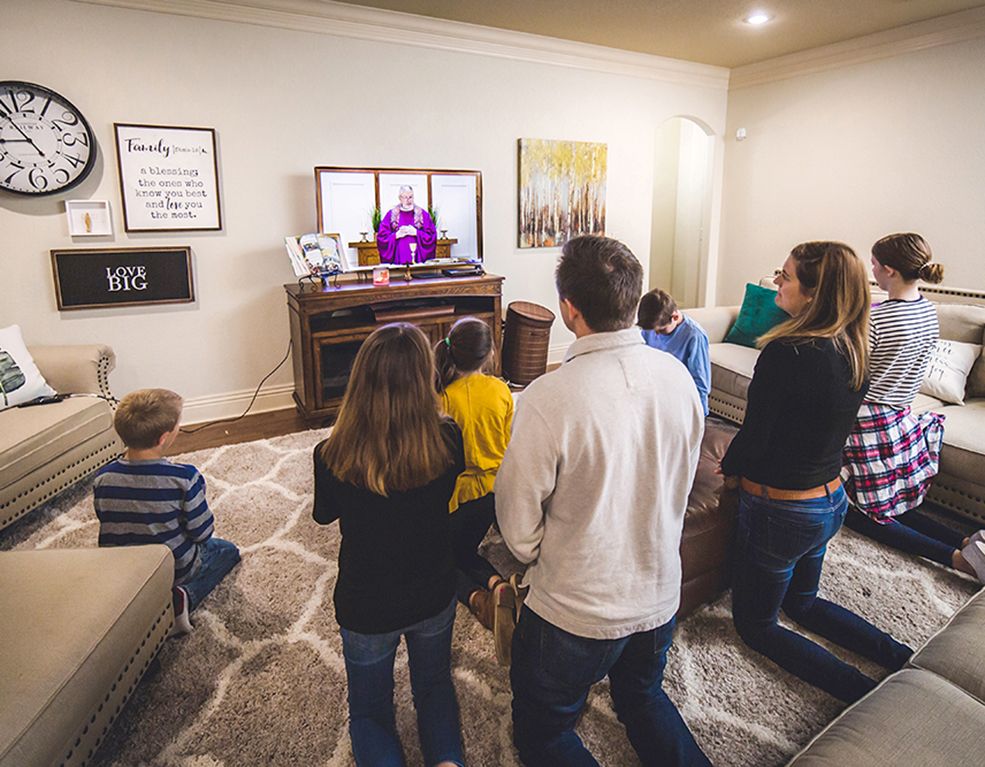
After COVID, Mass Will Never Be The Same
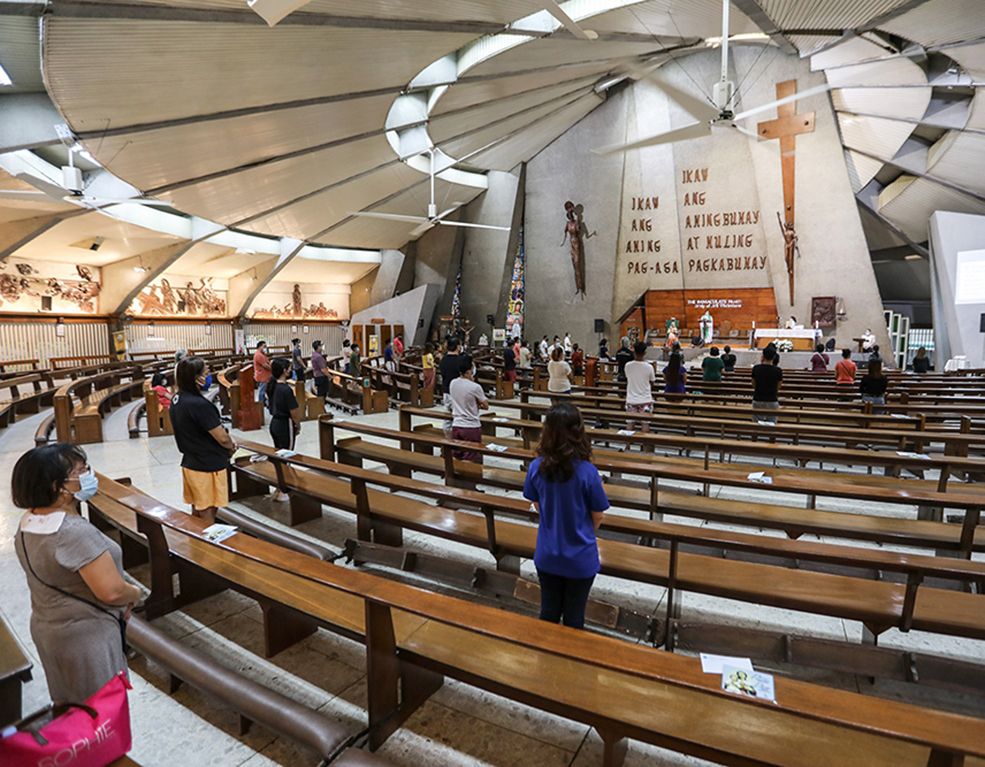
How Parishes Are Facing The Pandemic
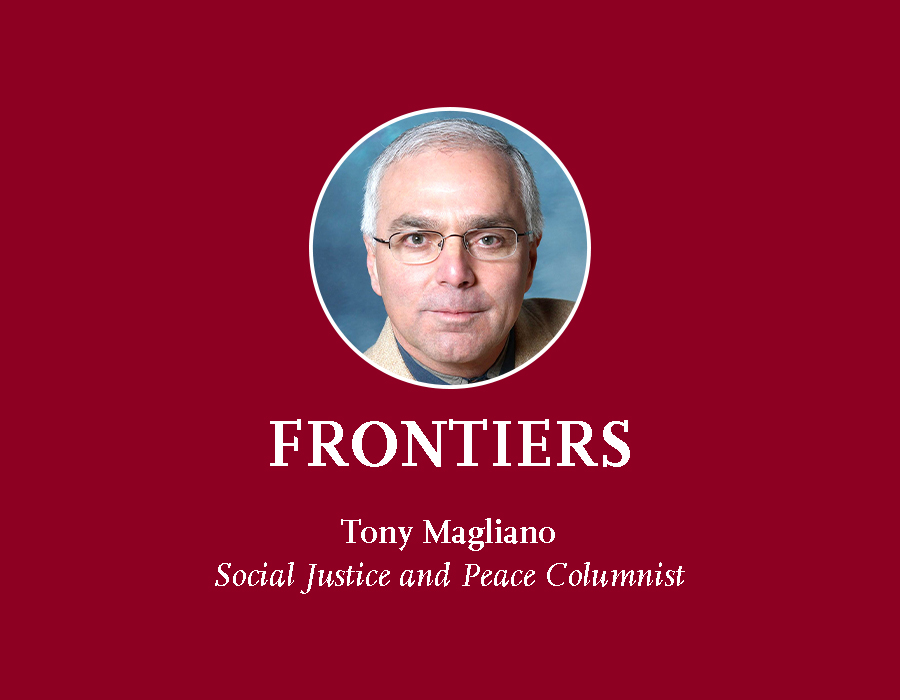
Warning! – ‘Code Red For Humanity’

Respecting Our Elderly
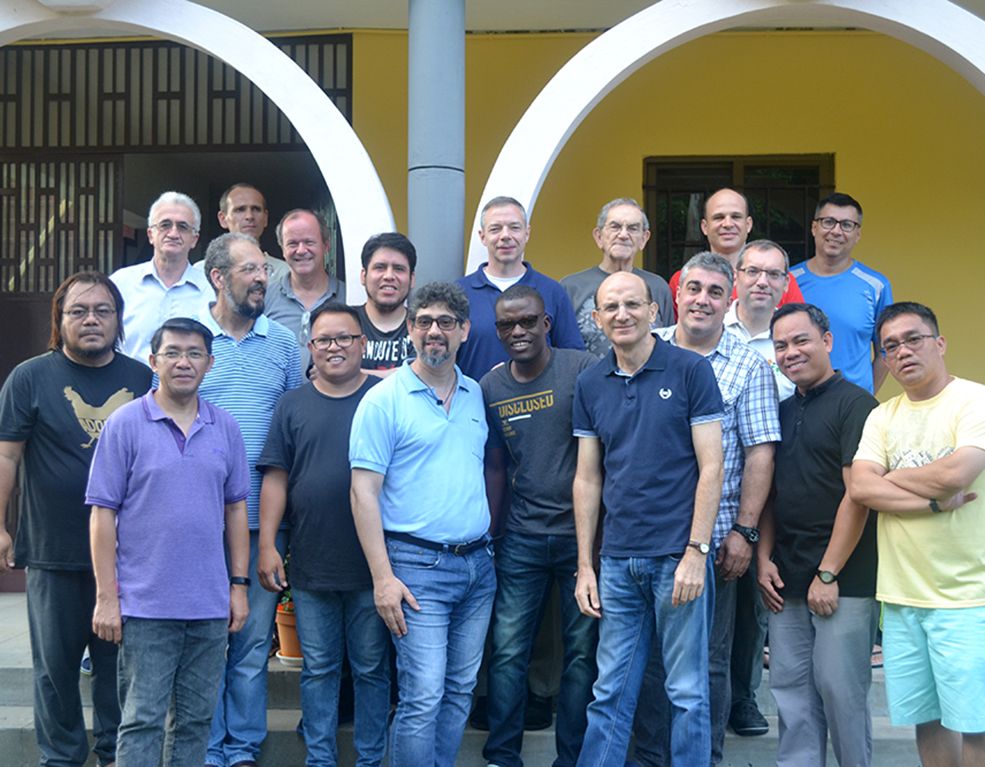
Comboni Mission In Asia
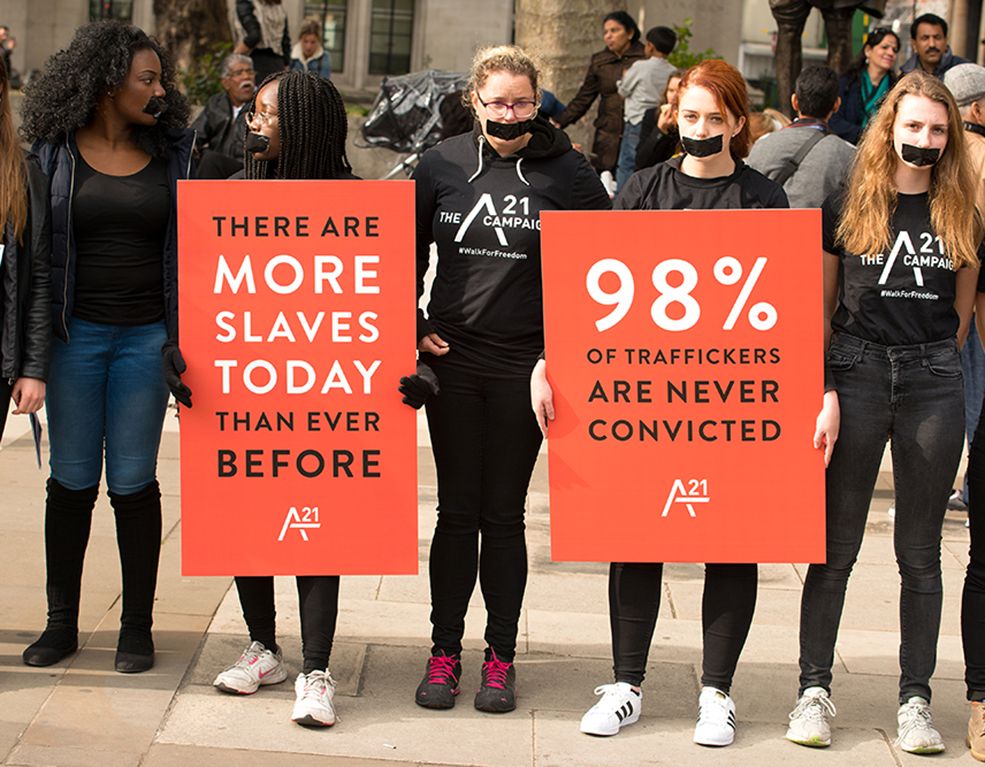
Human Trafficking, Why So Few Convictions?

Forgive To Be Forgiven
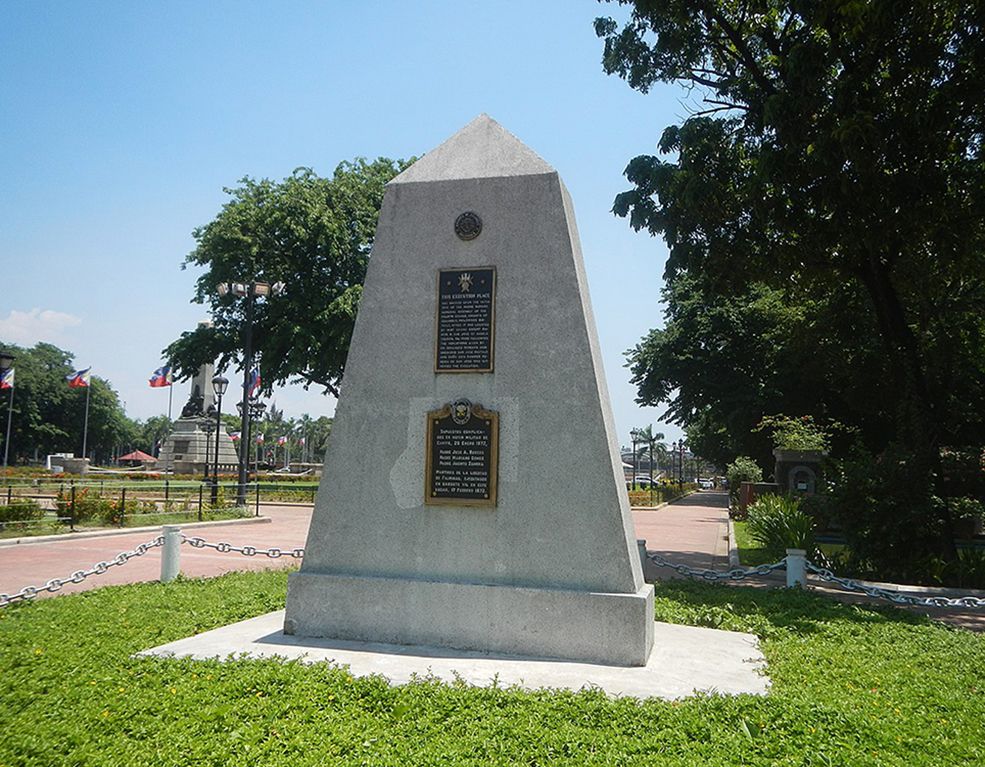
Holy Rebellions

Prioritizing What Is Most Important
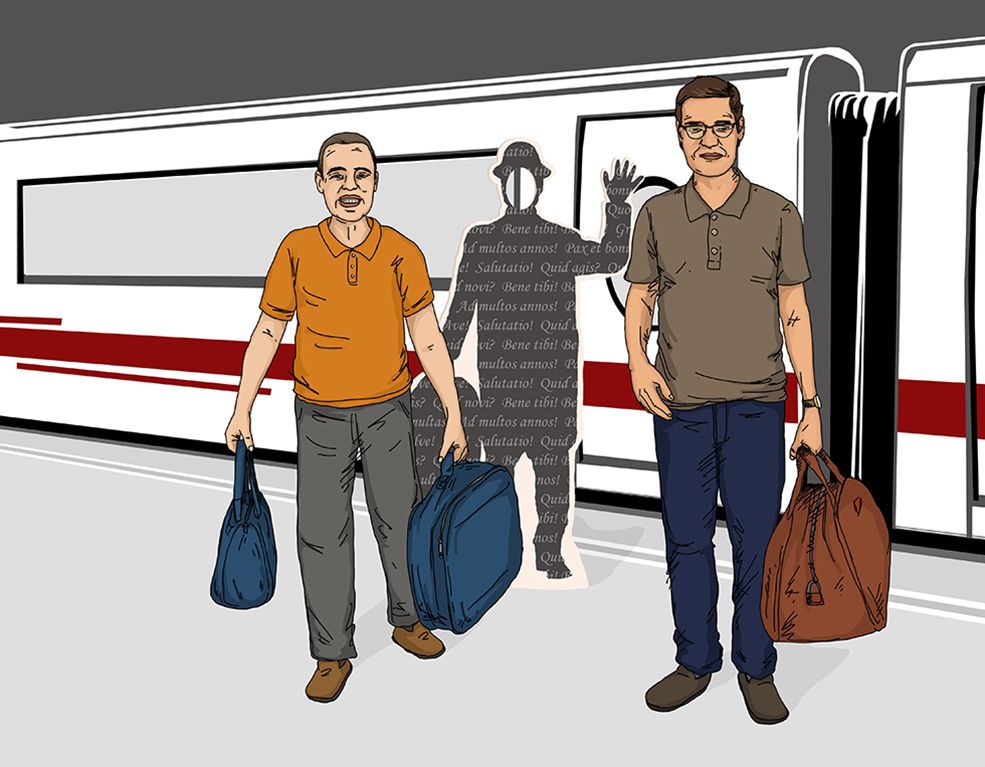
On The Importance Of Knowing Latin
From this topic.
The articles and content about this topic

Remembering a Bright, Shining Moment
Establishing a living church, becoming a vatican ii church, the ‘pope of mercy’ visits us, journeying in faith amidst hardships, the start of evangelization, beginning a beautiful journey of faith, keeping faith in challenging times, celebrating double papal visits, crisis, struggle, and recovery, explore other topics.
Browse other coverage
Presents, discusses and draws readers to reflect on issues of outmost relevance to the world today.
Very often, mission is carried out in frontier situations around the world. Those who embrace these situations have much to share.
UNITY IN DIVERSITY
Writer Ilsa Reyes will be exploring the richness of Pope Francis’s latest encyclical Fratelli Tutti with a view of helping our readers to get a grasp of the this beautiful papal document.
Puts to the front committed and inspiring people around the world who embrace humanitarian and religious causes with altruism and passion.
Focus on a given theme of interest touching upon social, economic and religious issues.
As the Philippines prepares to celebrate 500 years of the arrival of Christianity. Fr. James Kroeger leads us in this series into a discovery journey of the landmark events in the history of faith in the Philippine archipelago.
Aims to nurture and inspire our hearts and minds while pondering upon timely themes.
FILIPINO FOCUS
The large archipelago of the Philippines, in its richness of peoples and cultures, offers varied and challenging situations for mission.
Reflections and vocation stories that shape up the lives of young people.
MISSION IS FUN
As humor and goodness of heart are qualities of Christian and missionary life, the new column “Mission is fun” will be publishing some anecdotes and stories that have happened in a missionary context to lighten up the spirits and trigger a smile in our faces.
LIVING COMMUNION
To help readers of World Mission live this year dedicated to Ecumenism, Interreligious Dialogue and Indigenous Peoples, Tita Puangco, writer and lecturer, shares in this section insights on the spirituality of communion.
WINDS OF THE SPIRIT
A historic view of the Catholic movements that emerged from the grassroots as an inspiration by the Holy Spirit.
BRIDGE BUILDERS
On the Year of Ecumenism, Interreligious Dialogue and Indigenous Peoples, radio host and communicator Ilsa Reyes, in her monthly column, encourages Christians and people of good will to be one with their fellow people of other sects, religions and tribes.
Questions to a personality of the Church or secular world on matters of interest that touch upon the lives of people.
WORLD TOUCH
News from the Church, the missionary world and environment that inform and form the consciences.
CARE OF THE EARTH
A feature on environmental issues that are affecting the whole world with the view of raising awareness and prompting action.
The editor gives his personal take on a given topic related to the life of the Church, the society or the world.
YOUNG HEART
A monthly column on themes touching the lives of young people in the Year of the Youth in the Philippines by radio host and communicator I lsa Reyes.
A missionary living in the Chinese world shares his life-experiences made up of challenges and joyous encounters with common people.
EXTRAORDINARY PEOPLE
Life stories of people who deserve to be known for who they were, what they did and what they stood for in their journey on earth.
Stories of people whom a missionary met in his life and who were touched by Jesus in mysterious ways.
INCREASE OUR FAITH
Critical reflection from a Christian perspective on current issues.
SPECIAL MOMENTS
Comboni missionary Fr. Lorenzo Carraro makes a journey through history pinpointing landmark events that changed the course of humanity.
A biographical sketch of a public person, known for his/her influence in the society and in the Church, showing an exemplary commitment to the service of others.
Gives fresh, truthful, and comprehensive information on issues that are of concern to all.
LIFE'S ESSENTIALS
A column aimed at helping the readers live their Christian mission by focusing on what is essential in life and what it entails.

ASIAN FOCUS
Peoples, events, religion, culture and the society of Asia in focus.
THE SEARCHER'S PATH
The human heart always searches for greatness in God’s eyes, treading the path to the fullness of life - no matter what it takes.
INDIAN FOCUS
The subcontinent of India with its richness and variety of cultures and religions is given center stage.
AFRICAN FOCUS
The African continent in focus where Christianity is growing the fastest in the world.
JOURNEY MOMENTS
Well-known writer and public speaker, Fr. Jerry Orbos, accompanies our journey of life and faith with moments of wit and inspiration based on the biblical and human wisdom.
IGNATIUS STEPS
On the year dedicated to St. Ignatius of Loyala, Fr. Lorenzo Carraro walks us through the main themes of the Ignatian spirituality.
THE SEVEN LAST WORDS OF JESUS
Fr. John Taneburgo helps us to meditate every month on each of the Seven Last Words that Jesus uttered from the cross.
INSIDE THE HOLY BOOK
In this section, Fr. Lorenzo delves into the secrets and depths of the Sacred Scriptures opening for us the treasures of the Sacred Book so that the reader may delight in the knowledge of the Word of God.
CONVERSATIONS
Reflections about the synodal journey on a conversational and informal style to trigger reflection and sharing about the synodal path the Church has embarked upon.
- Subscribe Now
Past popes and Philippine presidents
Already have Rappler+? Sign in to listen to groundbreaking journalism.
This is AI generated summarization, which may have errors. For context, always refer to the full article.
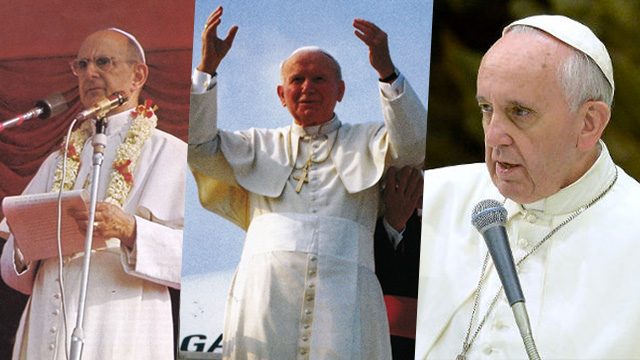
MANILA, Philippines – When Pope Francis arrives in the Philippines on Thursday, January 15 , he will not only arrive as the head of the Roman Catholic Church but also as the head of state of the Vatican.
After two decades, Pope Francis will only be the third pope to visit the most predominantly Catholic nation in Asia, following in the footsteps of his predecessors Blessed Pope Paul VI and Saint Pope John Paul II.
Past visiting popes were welcomed to Malacañang by presidents, and commented on state affairs. In the Philippines, the Catholic church – which boasts up to 80% of the country’s population as members – is perceived to wield much influence on government policies.
Rappler looks back at past papal visits to the Philippines as it prepares to welcome Francis to the country.
The first PH papal visit
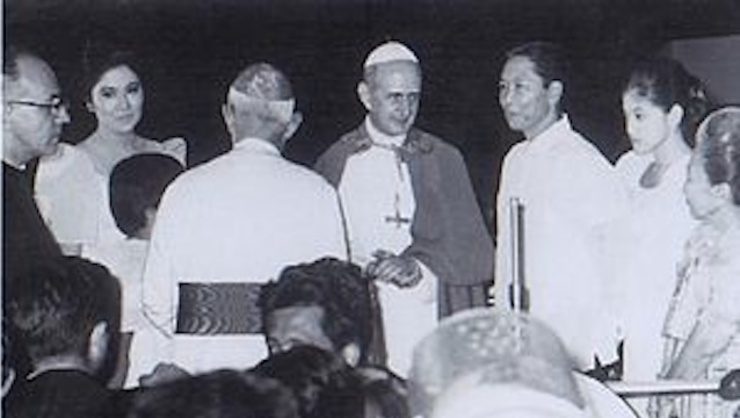
Blessed Pope Paul VI was the first pope to set foot in the Philippines for a Vatican state visit from November 27-29, 1970. The Italian pope was received by the late president Ferdinand E. Marcos.
The state visit included a pastoral visit to Manila. During his trip, Paul VI officiated the first papal Mass in the Far East at the Manila Cathedral, as well as an open-air mass at Rizal Park.
Like Pope Francis, Manila Archbishop Luis Antonio Cardinal Tagle said Paul VI came at a time when the Philippines was recovering from a typhoon . During his visit, Paul VI also made the rounds of the poorest sections of Manila, visiting the poor families in the district of Tondo.
“I felt two percussions on my chest but I didn’t think about a dagger.”
The Pope’s visit however was marred by an assassination attempt. Upon landing at the Manila International Airport, Paul VI, then 73, was stabbed twice by Benjamin Mendoza y Amor Flores, a Bolivian painter. Mendoza, dressed as a priest, approached Paul VI who mingled with the crowd, carrying a crucifix in one hand and a dagger with the other. He stabbed the Pope before he was held down and arrested.
Of the attack, Paul VI was quoted as saying , “I felt two percussions on my chest but I didn’t think about a dagger.” His doctor said he was stabbed just to the right and to left of the his jugular vein. Paul VI later said, he “forgave and forgot.”
Paul VI continued his visit, as planned. In his statement to Marcos , he said his visit to the country was an “apostolic” one.
“We would like to see strengthened their readiness to live in good understanding with all, to promote social development in the name of the charity of Christ whose witnesses they are, to prize the civic qualities of integrity, disinterestedness and equal service of all,” he said of Filipinos.
He also praised the Marcos leadership for its Church-tied public policy, saying, “We have been informed of the lofty and upright intentions which have inspired and still inspire the policies of your Government.” He did not give any specifics.
At the time, however, the government was already implementing its population control policy which advocated family planning methods not sanctioned by the Catholic church.
Pope John Paul II arrives
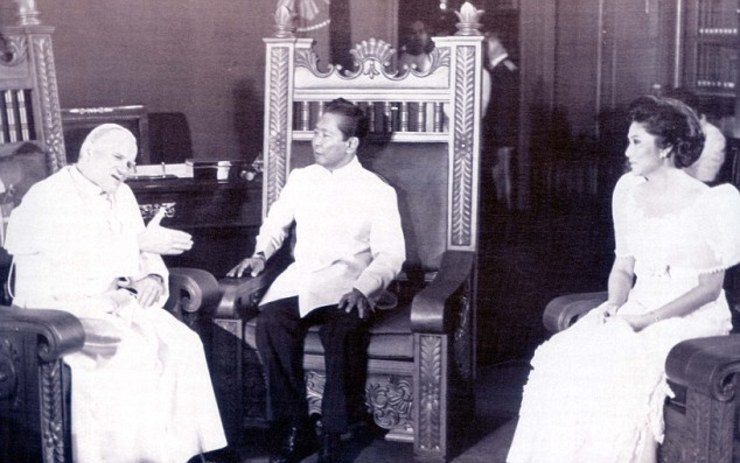
About 11 years after the first papal visit to the country, Saint John Paul II became the first pope to come to the Philippines on an official Vatican visit. He said he chose the destination himself.
“In my desire to know personally the peoples of Asia, I wanted my first papal visit to be to the Philippines. I come here retracing the steps of Paul Vl, whose memorable visit to this land is still recalled, I am sure, with love and gratitude, and whose inspiring presence still lives on in the hearts and the minds of the Filipino people,” he said in a statement to the Filipino people.
John Paul II was in the country from February 17-22, 1981, a 5-day visit that included pastoral visits to Manila, Cebu, Davao, Bacolod, Iloilo, Legazpi, and Baguio. During his stay, he also officiated the beatification of Lorenzo Ruiz, who later became the first-ever Philippine saint.
“Even in exceptional situations that may at times arise, one can never justify any violation of the fundamental dignity of the human person or of the basic rights that safeguard this dignity.”
He was again welcomed to Malacañang by Marcos. The Polish pope’s visit was especially memorable because of his speech at the Palace. While he praised the government for its commitment to preserving “the indissolubility of the marriage bond” and the “right to life of the unborn child,” he also denounced the dictatorship of Marcos in his presence . Marcos had just lifted Martial Law in time for the visit, but still practiced authoritarian rule.
“Even in exceptional situations that may at times arise, one can never justify any violation of the fundamental dignity of the human person or of the basic rights that safeguard this dignity. Legitimate concern for the security of a nation, as demanded by the common good, could lead to the temptation of subjugating to the State the human being and his or her dignity and rights,” he said.
He added, “Any apparent conflict between the exigencies of security and of the citizens’ basic rights must be resolved according to the fundamental principle – upheld always by the Church – that social organization exists only fοr the service of man and for the protection of his dignity, and that it cannot claim to serve the common good when human rights are not safeguarded.”
The return of Pope John Paul II
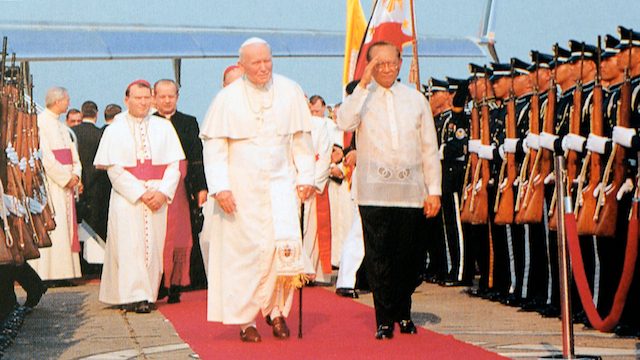
On his second visit to the Philippines, Saint John Paul II gathered the largest crowd recorded at that time, according to papal visit organizers, when 5 million mostly young people came to Rizal Park for the 10th World Youth Day.
The Polish pope was in the country from January 12-16, 1995, for a pastoral visit. He also paid a courtesy call to President Fidel V. Ramos at Malacañang Palace.
The trip was less political in nature, and was focused on the youth gathering. At Rizal Park, John Paul II acknowledged the youth’s “difficulties that previous generations experienced only partially and in a limited way,” citing “the weakness of much of family life, the lack of communication between parents and children, [and] the isolating and alienating influence of a large part of the media.”
He expressed optimism in the increasing focus on human rights which are “being codified and included in legislation both at national and international levels,” but reminded the youth that “the effective and guaranteed observance of respect for human dignity and human rights will be impossible if individuals and communities do not overcome self-interest, fear, greed and the thirst for power.” He encouraged them to follow the path of Christ.
Similar to Paul VI however, John Paul II was the subject of an assassination attempt, although Philippine authorities managed to thwart it before his arrival. Six days before John Paul II came to the Philippines, security officials foiled a plot to kill the Pope when they discovered a Malate apartment with bottles of chemical bomb components and a photo of the Pope. The apartment was occupied by by Ramzi Yousef, the mastermind of the first World Trade Center bombing in the US 1993.
John Paul II departed the Philippines unscathed.
Welcoming Pope Francis
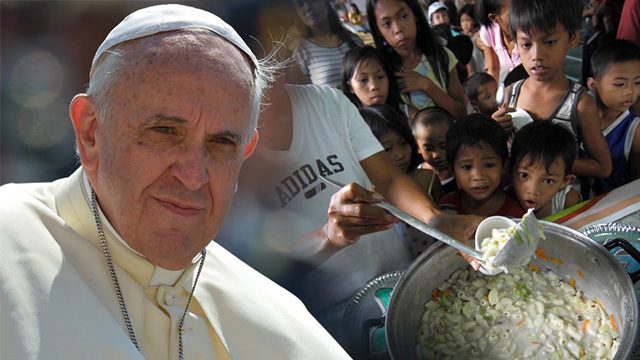
Pope Francis is scheduled to arrive in the Philippines on January 15. The popular head of the Vatican has been praised by observers for advocating a more progressive view on Church-related issues including homosexuality , atheists , and capitalism.
He is scheduled to meet with President Benigno Aquino III in Malacañang a day after his arrival but it remains to be seen whether, like his predecessors, the outspoken Pope will express any of his opinions on state policies.
Of his meeting with the Argentinian pontiff, Aquino has said he would thank him “for inspiring many that the Church they are part of is very much alive as opposed to [a church] that is divorced with society.” He also said he would likely discuss the state of the Church in the Philippines with Pope Francis, and ways to promote the “Kingdom of God” during his presidency . – Rappler.com
Add a comment
Please abide by Rappler's commenting guidelines .
There are no comments yet. Add your comment to start the conversation.
How does this make you feel?
Related Topics

Natashya Gutierrez
Recommended stories, {{ item.sitename }}, {{ item.title }}.
Checking your Rappler+ subscription...
Upgrade to Rappler+ for exclusive content and unlimited access.
Why is it important to subscribe? Learn more
You are subscribed to Rappler+
First pope who visited Philippines is now a saint
MANILA, Philippines (UPDATED) – Paul VI, who was the first pope to visit the Philippines, and martyred Archbishop Oscar Romero of El Salvador were declared saints on Sunday, October 14, in a ceremony led by Pope Francis.
Paul VI visited Manila from November 27 to 29, 1970, under the watch of then president Ferdinand Marcos.
During his 3-day trip to the Philippines in 1970, Paul VI said Mass at the Manila Cathedral and at the Quezon Memorial Circle, and also visited poor families in Tondo, Manila.
The late pope is remembered for reaffirming the Catholic Church's ban on contraception, and for concluding the Second Vatican Council or Vatican II, which sought to reform the Catholic Church.
Romero, on the other hand, was the archbishop of El Salvador who fought for the poor and was eventually assassinated while saying Mass in 1980.
In recent months, Catholics in the Philippines haved remembered Romero's example after unidentified assassins killed at least 3 Filipino priests , one of them after saying Mass .
Sunday ended the journey to sainthood of Catholic giants Paul VI and Romero.
60,000 pilgrims, heads of state attending
On this day, Pope Francis wore a blood-stained rope belt which belonged to Romero, who was murdered at the altar, as he led the ceremony in front of some 60,000 pilgrims and heads of state from across the world.
The pontiff also used a chalice and pastoral staff belonging to Paul VI in a canonization being seen as a reminder of Francis's call for "a poor church for the poor."
Both men have been hailed by Francis for their courage in turbulent times and their dedication to social justice and the downtrodden.
Their giant portraits were unfurled on Saint Peter's Basilica along with those of 5 other new saints, including an orphaned youth and a German nun.
Romero stood up for peasant rights in the face of a right-wing backlash which painted him as a radical supporter of "liberation" theology in his small, impoverished central American nation.
His radio sermons condemning government repression came to be heard throughout the land.
On March 24, 1980, the man dubbed the "voice of those without voice" was shot in the heart, killed by a single bullet as he prepared communion at the start of a bloody civil war which claimed some 75,000 lives.
Heavy opposition
For a long time, efforts to recognize Romero met with heavy opposition from conservative Catholics and the Salvadoran right, who saw veiled Marxism in his sermons.
Others said he had been killed for political rather than religious reasons and therefore should not be considered a Catholic martyr.
"It was like a dagger to the heart. I received threats," Archbishop Vincenzo Paglia, the man tasked with guiding the canonization process, told the Jesuit weekly America .
But Francis — the first Latin American pope — beatified him as a "martyr" in 2015 to popular acclaim after his predecessor, the retired Benedict XVI , championed his cause for canonization.
It was Benedict who also extolled Paul VI, a man he once described as "almost superhuman".
Paul VI — who encouraged Romero in his struggle — was the first head of the Roman Catholic Church to attempt to reform the Vatican's powerful and unruly Curia, a challenge Francis also decided to take on.
He was also famously the first to reject the papal trappings of luxury, setting aside the traditional papal tiara — a jewel-encrusted, three-tiered, conical crown — shortly after his election in 1963 and donating its value to the poor.
It was a gesture echoed by Francis, who renounced the papal apartment and gold cross. (READ: Pope Francis known as champion of poor )
'Brave Christian'
The softly-spoken Giovanni Battista Montini was elected pope in 1963 in a difficult period for the church, which lost many believers as populist rebellions swept across the West.
He completed the reforms of the Second Vatican Council and was the first pilgrim pope, crossing continents on his trips to meet the faithful.
At his beatification mass, Francis had hailed him a "brave Christian".
But he was also hampered by a reputation for being weak and overly cautious.
He is most famous for reaffirming the church's ban on contraception — despite the fact that his own advisory commission voted overwhelming to lift the prohibition.
The decision enraged many Catholics at a time of sexual freedoms, with women demanding the right to use the birth control pill. – with reports from Agence France-Presse/Rappler.com

By providing an email address. I agree to the Terms of Use and acknowledge that I have read the Privacy Policy .
Paul VI, first pope to visit Philippines, to be beatified soon
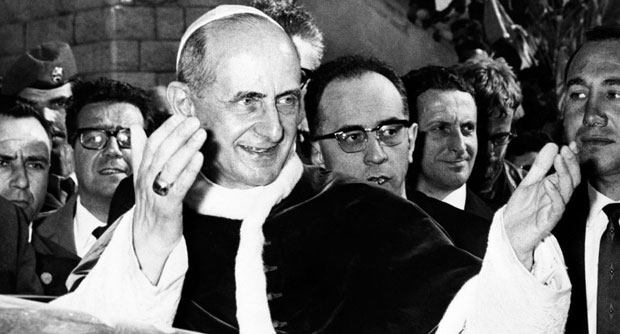
Pope Paul VI. AFP FILE PHOTO
ROME — After canonizing Popes John XXIII and John Paul II, the Holy See is now looking into beatifying Pope Paul VI, possibly as early as October when bishops from around the world meet in the Vatican for the Synod of Bishops on the Family.
Raising Paul VI to the status of “blessed” has become a strong possibility after medical and theological experts reportedly approved as a miracle a United States case in the 1990s involving a fetus with brain damage whose mother had refused physicians’ advice that it be aborted. After reportedly praying to the late Pope, the mother gave birth to the child, who grew up healthy and normal.
According to the Italian weekly magazine Credere of the Pauline Fathers, cardinals and bishops who are members of the Sacred Congregation for the Causes of Saints will meet on May 5 to confirm the miracle.
Once the bishops and cardinals approve the miracle, Pope Francis will likely proclaim Paul VI’s beatification in October at the end of the Synod of Bishops, according to Credere.
One of only three co-chairpersons appointed by Pope Francis to preside over the synod is Manila Archbishop Luis Antonio Cardinal Tagle.
Pope from 1963 to 1978, Paul VI promulgated the reforms of the Second Vatican Council, which St. John XXIII called in 1962, and issued the controversial encyclical “Humanae Vitae,” reaffirming the Church’s teaching against abortion and contraception.
Paul VI has special relevance to the Philippines, as he was the first pope to visit the country—in 1970, when an attempt on his life was made at the Manila International Airport.
Earlier, according to another Italian magazine, Vatican Insider, medical experts said there was no scientific explanation for the US case and theological experts of the Sacred Congregation for the Causes of Saints, the Vatican agency in charge of beatification and canonization, approved it as a miracle.
Credere said the miracle attributed to Paul VI involved a case in California in which a fetus was in a critical condition due to complications during the 24th week of the pregnancy and doctors predicted the baby would die inside the mother’s womb.
“The diagnosis was severe,” the magazine reported. “The baby would probably die inside the uterus, or at best, would be born with seriously damaged kidneys.”
Doctors recommended abortion, but instead the mother reportedly placed an image of Pope Paul VI and a relic from his vestments on her stomach and began praying to him.
Inexplicably, the baby was born healthy in the 39th week of the mother’s pregnancy. Doctors, Credere reported, closely monitored the child’s health, particularly its kidneys, until age 12.
In 2003, the Vatican launched an inquiry into the case and medical experts officially confirmed last year that the child’s recovery had no scientific or medical explanation, Credere said.
Born in 1897 in a small town in the northern Italian province of Brescia, Giovanni Battista Montini was cardinal archbishop of Milan before he was elected to succeed John XXIII in 1963.
Pope Paul VI implemented the reforms of the Second Vatican Council and before John Paul II, became the most traveled Pope in history, earning him the title “Pilgrim Pope.”
He was the first pope to leave Italy since 1809 and the first pope to visit North America, Asia and Africa. He also pressed on with the ecumenical spirit unleashed by the Second Vatican Council and met with leaders of the Orthodox, Anglican and non-Catholic Christian churches. He was the fist pope to make a pilgrimage to the Holy Land and the first pope to address the United Nations General Assembly during his US visit in 1965.
Paul VI made a pastoral visit to the Philippines in 1970, the first by an incumbent pope to the then only Christian nation in Asia. But the visit was marred right at his arrival at the Manila International Airport on Nov. 20 when a Bolivian surrealist painter, Benjamin Mendoza y Amor Flores, lunged at him with a 33-centimeter knife. The Pope’s personal secretary, Msgr. Pasquale Macchi, broke the attack by grabbing Mendoza and throwing him to the ground. Philippine security officers then subdued and arrested Mendoza.
Paul VI wrote eight encyclicals that reaffirmed the real presence in the Holy Eucharist (“Mysterium Fidei”) and mandatory clerical celibacy (“Sacerdotalis Caelibatus”), and restated the social teachings of the Church on peace, justice, and development (“Populorum Progressio”).
But his most controversial encyclical was “Humanae Vitae” (Of Human Life). Subtiled “On the Regulation of Birth” and issued in 1968, it met a storm of protest and criticism from the secular and liberal media in Europe and the United States and even from Catholic circles for restating the traditional ban on contraception.
Paul VI said he was not surprised by the reaction. “In 20 years,” he told a cardinal, “they’ll call me a prophet.”
In 1978, he reaffirmed the teaching of “Humanae Vitae,” and papal biographers have since noted that controversies over his restatements of mandatory clerical celibacy and the Church’s staunch ban on contraception overshadowed the last years of his pontificate.
In his 1993 biography of Paul VI, British Vatican journalist Peter Hebblethwaite called the late pontiff “The First Modern Pope.”
Paul VI was declared “Servant of God” by Pope John Paul II in 1993 and “Venerable” by Pope Benedict XVI in 2012.
The canonization of well-loved Popes John XXIII and John Paul II on April 27 has increased public interest in other popes who are on the path to sainthood.
Other popes whose causes for sainthood may have been given a push because of the euphoria over the joint papal canonization last week are Blessed Pius IX, the longest serving pontiff in history (1846-1878); Venerable Pius XII, the predecessor of St. John XXIII, and “Servant of God” John Paul I, who was succeeded by St. John Paul II.
Pius IX (Giovanni Maria Mastai-Ferretti; 1792-1878) was beatified along with John XXIII by John Paul II in 2000. He was the last sovereign of Rome and the Papal States that fell completely to Giuseppe Garibaldi and the nationalist armies in 1870. He defined the dogma of the Immaculate Conception in 1848 and called the First Vatican Council in 1868, which defined papal infallibility and the divine inspiration of the Bible.
Pius XII (Eugenio Maria Giuseppe Giovanni Pacelli; 1876-1958) was pope from 1939 to 1958 and thus guided the Church through the very difficult years of World War II. A skillful diplomat, he opposed communism and while the Vatican was neutral during the war, condemned race-based killings and aided Italian Jews. But some sectors of the media and popular culture have accused him of silence and inaction in the face of the mass slaughter of Jews.
Popes Paul VI, John Paul II and Benedict XVI have defended the record of Pius XII. Paul VI opened the process for his canonization in 1965 during the final session of the Second Vatican Council. John Paul II in 1990 made him a “Servant of God,” the first step to sainthood, and Benedict XVI in 2009 declared him “Venerable.”
John Paul I (Albino Luciani; 1912-1978) was one of the shortest reigning popes in history. As patriarch of Venice like John XXIII, he was elected on Aug. 25, 1978, to succeed Paul VI and became the first pope to adopt a double name, as a tribute, he said, to John XXIII and Paul VI, who made him cardinal.
But he died a month later, on Sept. 28, 1978. A conclave soon after elected Karol Wojtyla from Poland, who, in recognition of his predecessor, chose the name “John Paul II.” Hebblethwaite called the improbable transition as “The Year of the Three Popes.”
Although he reigned for only a month, John Paul I immediately captivated the world for his charming smile, winning simplicity, and paternal warmth.
In 1990, Brazilian bishops petitioned Pope John Paul II to declare him a saint, opening his canonization process.
The joint canonization of John XXIII and John Paul II by Pope Francis in the presence of Pope Emeritus Benedict XVI on April 27 was billed as “the day of the four popes” by the Italian media and occasioned the biggest religious gathering in the European continent, with at least a million people packing St. Peter’s Square and surrounding areas.
“Their causes of canonization were completed around the same period, so it is appropriate that they be canonized together … in the presence of two popes: Francis and Benedict XVI,” said Fr. Gregory Ramon Gaston, rector of the Pontificio Collegio Filippino.
Despite the popularity of the canonization among Catholics worldwide and the financial windfall it has reaped for the ailing Italian economy, some sectors of the media have criticized the canonization process for having been hastened for the two popes, who have their own partisans.
John XXIII (Angelo Giuseppe Roncalli, 1881-1963) is held up by progressive Catholics and the liberal media as a modern pope for having called the Second Vatican Council, which sought to modernize the Church. In contrast, John Paul II is portrayed as a conservative for having helped crush communism in Eastern Europe and upholding traditional Church teachings on sex and family and other contentious issues; he is criticized in liberal sectors for allegedly setting back the Church and checking the reforms of Vatican II.
Liberal Catholics and the media criticized Pope Benedict XVI when he waived the requirement for the mandatory five-year observance of any candidate for sainthood who died of natural causes. “In recent causes, the petition must be presented no sooner than five years after the death of the Servant of God,” declares the “Divinus Perfectionis Magister,” the 1983 apostolic constitution that refined the canonization process.
Ironically, the charter was issued by Pope John Paul II himself.
Benedict XVI beatified his predecessor in 2011, only six years after John Paul II’s death.
But Catholics who championed John Paul II’s canonization criticized the Holy See for waiving the second miracle required of a candidate for sainthood so that John XXIII could be proclaimed saint immediately like the Polish pope.
Pope Francis waived the requirement, saying that John XXIII’s important role in calling the Second Vatican Council was enough to merit him sainthood. He also set the canonization of the two popes together as an “inclusive” gesture to unite both progressive and conservative strands of the Church.
Despite the alleged fast-tracking of their causes, John XXIII and John Paul II became only the fourth and fifth popes of the second millennium to be declared saints. Other pope saints of the last 1,000 years are Celestine V of the 13th century, Pius V of the 16th century, and Pius X, who was canonized 60 years ago.
Fr. Pedro Luis Gonzalez, a retired professor at the Angelicum in Rome and former dean of theology of the Pontifical University of Santo Tomas in Manila, said the joint canonization should not be seen as either hastening or retiring further the canonization process.
“I don’t think there’s going to be a new policy of either speeding up or slowing down the process,” said Gonzalez, who’s now prior of the Blessed Trinity Church religious community of Spanish Dominicans in Rome’s fashionable Via Condotti district near the Spanish Steps. A pope traditionally visits the church on Dec. 8, when he pays tribute to the nearby memorial to the Immaculate Conception.
But Gonzalez said he welcomed the fact that the joint canonization has renewed interest in the causes of other papal candidates for sainthood.
He described the causes of Pius XII and Paul VI as “certainly a good idea,” as they were “extraordinary figures who have been misunderstood.” Warts and all, he called the pope candidates as “holy men who led the Church through difficult times.”
“Holiness and heroic virtues are the main requirements for sainthood,” Gonzalez said.
RELATED STORY
Subscribe to our daily newsletter
Pope Francis declares new saints John Paul II, John XXIII
Subscribe to our global news
Disclaimer: Comments do not represent the views of INQUIRER.net. We reserve the right to exclude comments which are inconsistent with our editorial standards. FULL DISCLAIMER
© copyright 1997-2024 inquirer.net | all rights reserved.
We use cookies to ensure you get the best experience on our website. By continuing, you are agreeing to our use of cookies. To find out more, please click this link.
Manila Cathedral honors past papal visits with exhibition
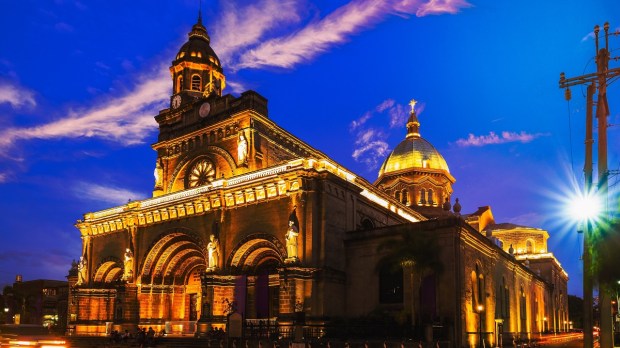
alentilove | Shutterstock
The Manila Cathedral is preparing to commemorate the papal visits of three popes who visited the Philippines . From June 29 to July 2, the Filipino Catholic monument church will showcase an exhibit featuring memorabilia related to Pope St. Paul VI, Pope St. John Paul II, and Pope Francis.
In a Facebook post , the Manila Cathedral announced the event – titled The Popes in the Philippines – noting that the four-day exhibition will include a prayer services and a “pledge of loyalty to the Holy Father,” Pope Francis.
The message went on to list a few of the articles that will be on display, including the portrait given by St. Paul VI to the Apostolic Nunciature, the chair used by St. John Paul II, and the Missal used by Pope Francis.
According to the Filipino news outlet PhilStar , the exhibition will further feature a variety of “liturgical and extra-liturgical items used by the popes who visited our country,” which will be displayed for public viewing. The exhibit is scheduled to open at 5:30 p.m. on June 29, the Solemnity of Sts. Peter and Paul, followed by a special Mass at 6 p.m., celebrated by the Papal Nuncio to the Philippines, Archbishop Charles Brown.
All three of the featured popes celebrated Mass at Manila Cathedral during their visits, which brings a special relevance to the event for the Catholics of Manila. In 1970, Pope St. Paul VI visited the Philippines, during which he survived an attempted assassination by a man dressed as a priest . Although the Pontiff was mildly injured, he continued his papal visit, meeting with poor families in the Tondo district.
Pope St. John Paul II was the next to make the trip to Manila, in 1981. During this trip, JPII beatified Lorenzo Ruiz, the first Filipino saint, and met with dictator Ferdinand Marcos, to whom he decried the state of human rights in the nation . The Polish Pope would make another trip to Manila in 1995, to attend World Youth Day.
Pope Francis is the most recent pontiff to visit the island nation, making a state and pastoral trip to the Philippines in 2015. There, the Pope also traveled to the island of Leyte, where he met with those affected by Super Typhoon Yolanda.
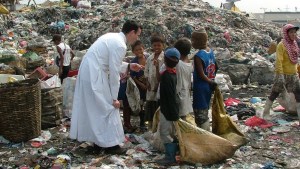
Articles like these are sponsored free for every Catholic through the support of generous readers just like you.
Help us continue to bring the Gospel to people everywhere through uplifting Catholic news, stories, spirituality, and more.

- Agri-Commodities
- Asean Economic Community
- Banking & Finance
- Business Sense
- Entrepreneur
- Executive Views
- Export Unlimited
- Harvard Management Update
- Monday Morning
- Mutual Funds
- Stock Market Outlook
- The Integrity Initiative
- Editorial cartoon
- Design&Space
- Digital Life
- 360° Review
- Biodiversity
- Climate Change
- Environment
- Envoys & Expats
- Health & Fitness
- Mission: PHL
- Perspective
- Today in History
- Tony&Nick
- When I Was 25
- Wine & Dine
- Live & In Quarantine
- Bulletin Board
- Public Service
- The Broader Look
Today’s front page, Tuesday, April 30, 2024

POPES IN THE PHL | Manila Cathedral exhibit features papal visits’ memorabilia, including ‘Popemobile’
- Eunice A. Reyes
- July 3, 2023
- 4 minute read

MEMORIES are often vague. We might remember details, or small parts of these memories, but as time goes on, we often forget.
Souvenirs and memorabilia are objects that represent a certain memory, helping us remember every single fragment of an event. The small exhibit that opened last week at Manila Cathedral, titled, “The Popes in the Philippines,” is a Papal Visit Memorabilia Exhibit. But more than that, it is enough reason to warm the hearts of Filipinos, especially Catholics, who have followed with love the visiting popes everywhere they went.

The opening of the exhibit was officiated by the Papal Nuncio, Archbishop Charles John Brown; with Jose Cardinal Advincula, the Archbishop of Manila; and Msgr. Rolly Dela Cruz, Rector of the Manila Cathedral. The opening was capped by the celebration of holy mass.
The exhibit, indeed, abounds with warm memories, comprising photos and memorabilia during the visits of various popes, the last of which was in 2015 by the current one, Pope Francis.
In that most recent visit, one item that drew most interest was the vehicle used by Pope Francis, or the Pope Mobile.There are, in all, three Popes who graciously blessed our country with their visit; let us look back at them one by one.
Pope Paul VI was the first ever pope to visit the Philippines, in 1970. It was a very fortunate event, but marred by unfortunate circumstances. He had then just disembarked from a chartered plane at Manila airport when Benjamin Mendoza, a Bolivian surrealist painter who was disguised as a priest, stabbed the pope twice. Luckily, he was immediately subdued and arrested. Pope Paul VI survived his wounds, and went on his trip as planned. At the exhibit, there were archival photos of his Papal Visit, showcasing a well-attended Eucharist celebrated by the pope himself.

The second pope who went to our country, this time on an official Vatican visit, was Pope John Paul II. He arrived on February 17 of 1981.
His visit was short yet very meaningful to Filipinos. Some of the archival photos from his visit may be seen at on the Manila Cathedral exhibit. Pope John Paul II actually revisited during World Youth Day 1995, where he attracted one of the largest crowds ever at a papal event—over 4 million people. One can see at the exhibit the chasuble he used during his second visit.
The most recent papal visit was in 2015, wherein the record for 4 million people in attendance was broken. The last mass Pope Francis conducted gathered almost 6 million people on Luneta Park, and was to be called “the largest papal gathering in history.”
“Lolo Kiko,” as he was fondly called by the faithful, was loved by Filipinos all over the country. He visited Manila, Tacloban, and Palo, Leyte.
At the exhibit, the chalice he used, as well as the golden medal which he bestowed as a gift, are on display. Pope Francis actually gave us a chalice, as a token of gratitude for the warm welcome he received during his stay at the Philippines. It is safely stored at the exhibit, together with all the other objects he used during his visit.
Popemobile, big attraction
At the exhibit, what most awed the people was the vehicle used by Pope Francis during his recent visit. The “Popemobile” is a specially designed vehicle for the Pope to use during his parade, allowing him to be more visible and safe, while greeting the crowd.
The two-cab Isuzu D-max was converted into a single cab to fit the Pope’s Italian leather-upholstered chair and two additional seats for his entourage. Because “Lolo Kiko” discouraged a bulletproof vehicle, the popemobile has both sides open and only a plexiglass cover in front, to shield the Pope from the weather. Strong rails were installed at the vehicle’s sides for the Pope and his security team to hold on as the popemobile is in motion. Another excellent aspect of the Isuzu Popemobile was the recessed overhead lighting which made it possible for onlookers to see His Holiness at all hours of the day and night.
The Popemobile was assembled in record time through the efforts of Isuzu Gencars and donated for the pope’s visit by the family of the late businessman-philanthropist Ambassador Antonio L. Cabangon-Chua, the former ambassador to Laos, popularly called ALC.
In his remarks at the exhibit opening, the papal nuncio Cardinal Brown thanked all those who helped make the exhibit possible, citing the help of Isuzu Gencars, now led by ALC’s son D. Edgard A. Cabangon.
The late ambassador was a known faithful servant of the church, and patron of numerous causes and advocacies of the Catholic Church.
For four decades, he was the driving spirit behind the Catholic Mass Media Awards (CMMA), a cause he championed owing to his close friendship with the late archbishop of Manila, Jaime Cardinal Sin.
Related Topics
Phl to meet 50% digital payments goal in ’23.
- Cai U. Ordinario

PHL debt transparency rises in global report
Ccg ships water cannon phl ships enroute to panatag shoal.
- Rex Anthony Naval
- April 30, 2024

- Photo Gallery
Students are told to stay home as Southeast Asia swelters in prolonged heat wave
- Jim Gomez / The Associated Press

Stock market today (April 30, 2024): Asian shares mostly rise to start a week full of earnings, Fed meeting
- Yuri Kageyama / Associated Press

GOCCs must remit 25% more dividends to national government
- Reine Juvierre Alberto

MIC eyes investments in 5 BCDA properties
- Reine Juvierre S. Alberto
‘Street food hawkers can boost culinary tourism’
- Ma. Stella F. Arnaldo

Transport groups press SC for TRO on 1st day of strike
- Joel R. San Juan

Just build more plants, says MVP on latest power woes
- Lenie Lectura

PHL support for agri ‘most distorting’ to trade–OECD

Extreme heat imperils PHL food security–ADB
Da asks solons to amend rtl to allow da, dti to import rice.
- Jovee Marie N. de la Cruz
EOPT seen to simplify tax compliance, nip tax evasion

NSC to counter China’s ‘corrosive narratives’ on West Philippine Sea
- Samuel Medenilla
Ports Authority eyes growth in traffic of cruise tourists
- Lorenz S. Marasigan

Legislators to review laws to combat economic crimes
Fuel prices to go down on tuesday.

Today in History: April 30, Vietnam War ends with fall of Saigon
- The Associated Press
PAF gets mobile Japanese radar system
Pbbm certain 1st barmm parliamentary polls will be fine.

Soft opening of expansive Isuzu San Pablo showroom
- BusinessMirror
Input your search keywords and press Enter.
By providing an email address. I agree to the Terms of Use and acknowledge that I have read the Privacy Policy .
Pope heads to Venice in first trip of 2024
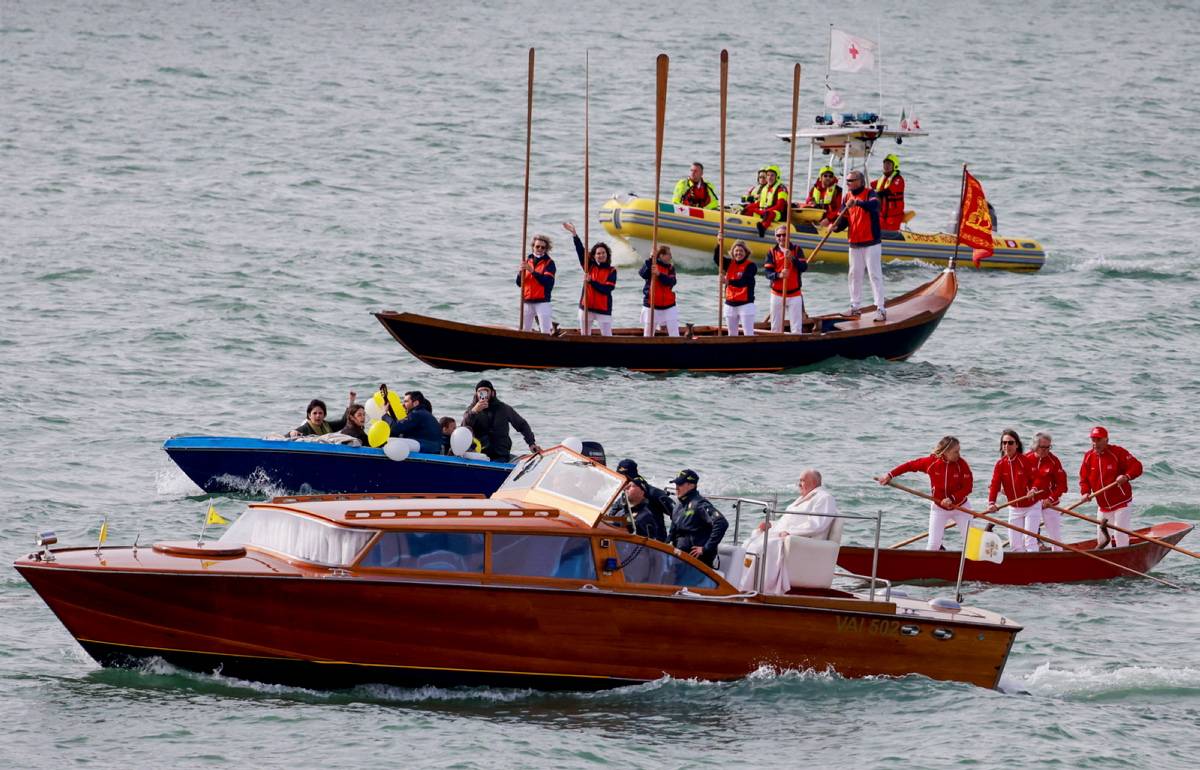
Pope Francis sits on a boat as he arrives on the day of a meeting with young people at the Square in front of the Basilica of Santa Maria della Salute, in Venice, Italy, April 28, 2024. REUTERS/YARA NARDI
VENICE, ITALY — Pope Francis flew into Venice on Sunday for his first trip of the year, testing his mobility and resilience after a number of health scares in recent months.
The Venice trip is the first of four in Italy planned for the next three months. He is scheduled to visit Verona in May and Trieste in July, and is also expected to attend a June summit of Group of Seven (G7) leaders in Bari.
In September, he is set to embark on what may be the longest foreign trip of his papacy, traveling to Indonesia, Timor-Leste, Singapore and Papua New Guinea on Sept. 2 to 13.
READ: The life and times of Pope Francis as he marks his 10th anniversary as pontiff
This was the 87-year-old Pope’s first visit to the lagoon city since his 2013 election and also the first time a pontiff has been to the Venice Biennale—a prestigious art show with exhibitions sponsored by many countries.
‘Overcrowding, violence’
The Vatican’s exhibition has been set up in a women’s prison and the Pope kicked off his trip by flying directly into the Giudecca jail by helicopter to view the show entitled “Through My Eyes.”
“Prison is a harsh reality, and problems such as overcrowding, the lack of facilities and resources, and episodes of violence, give rise to a great deal of suffering. But it can also become a place of moral and material rebirth,” he said.
“Let us not forget that we all have mistakes to be forgiven and wounds to heal,” he told a group of inmates and guards seated in the courtyard of the prison.
The unusual decision to house the Holy See pavilion in the jail highlights Francis’ repeated calls for society to rally around the poor and neglected, including prison populations.
The Vatican exhibit features creations by nine contemporary artists who worked closely with inmates on the project.
Exempt from entry fee
This is the Pope’s first trip beyond Rome since a brief visit to the French city of Marseilles in September last year. He had been due to attend a climate change conference in the United Arab Emirates in December, but pulled out shortly beforehand after coming down with influenza.
Francis uses a cane or a wheelchair to move around due to a knee ailment, and suffers from repeated bouts of bronchitis and flu. He unexpectedly withdrew from a Good Friday procession in March “to preserve his health,” but has looked well since.
After leaving the jail, he was due to travel by motorboat to the 16th-century church of La Madeleine to talk to young Venetians, and then to St. Mark’s Basilica for a Mass that an estimated 10,000 people are expected to attend.
As a guest, he was exempt from buying a five-euro ($5.30) ticket, but nonresident pilgrims visiting for the Mass had to pay.
Over the weekend Venice launched a new entry fee for day-trippers, aimed at easing the pressure of tourism on the Unesco World Heritage Site.
Francis is the fourth pope to visit the city, after Paul VI (1972), Jean-Paul II (1985) and Benedict XVI (2011).
The diocese of Venice is one of the largest in Italy, with 125 parishes, and has close ties with the papacy. Three Venice patriarchs became popes in the 20th century.
Subscribe to our daily newsletter
The Argentine pontiff has toured the world in his 11 years as head of the Catholic Church, but has not traveled since last September. —REPORTS FROM REUTERS AND AGENCE FRANCE-PRESSE
Disclaimer: Comments do not represent the views of INQUIRER.net. We reserve the right to exclude comments which are inconsistent with our editorial standards. FULL DISCLAIMER
© copyright 1997-2024 inquirer.net | all rights reserved.
We use cookies to ensure you get the best experience on our website. By continuing, you are agreeing to our use of cookies. To find out more, please click this link.
Inside look at Pope Francis' visit to Venice from St. Mark's Square
With a message of hope and faith, this fifth Sunday of Easter, Pope Francis has left Italy's iconic canal-filled city of Venice, after an intense morning, that marked his first pastoral visit, and travel outside of Rome, since the start of the year. This day trip represents the first of others in Italy in the months to come, and falls before his whirlwind four-country Apostolic Visit to Asia and Oceania in September.
At the Holy Father's Mass in St. Mark's Square, the Holy Father offered comforting words to the faithful, telling them to remain in the Lord, clarifying that this does not mean staying still, but rather, letting the Lord's love and closeness empower us.

During his subsequent Regina Coeli address, before he privately venerated the relics of St. Mark, whose feast day was 25 April, inside St. Mark's Basilica, the Holy Father made heartfelt appeals for peace and an end to the suffering around the world, especially in Haiti, Ukraine, and the Holy Land.
First Pope to visit Venice Art Biennial
The Pope had arrived by helicopter, early this morning, in the women's prison on the Giudecca island to visit the Holy See Pavilion of the world-renowned Venice Art Biennial, a major international contemporary art exhibition. This year, the Biennial, which began in 1895, marks its 60th edition.
Pope Francis' visit also marked the first time a Pope has ever visited the event.
With the title ' With my eyes', the Pavilion, designed to remember in a special way human rights and the marginalized, was commissioned by Cardinal José Tolentino de Mendonça, Prefect of the Dicastery for Culture and Education of the Holy See, and curated by Chiara Paris and Bruno Racine. The Pavilion is housed inside the prison facility, the same prison where Pope St. John Paul II celebrated Mass when he visited Venice in 1985.

Encounters of joy and emotion
Upon Pope Francis' arrival to the prison, he held a moving encounter with detainees, which follows less than a month with his having washed the feet of women prisoners on Holy Thursday at the Rebbibia prison in Rome.
The Pope told the prisoners to always look to the future, to have hope, and that nothing can rob that hope. He also warmly urged them, smiling, to pray for him, before gifting them an icon of the Blessed Mother, reminding them of the exemplary, maternal tenderness of Mary. It was a very emotional encounter, bringing tears to the eyes of many.
Thereafter, Pope Francis met with artists associated with the pavilion, among others, in the prison chapel. After being welcomed by Cardinal Mendonça, he encouraged them in their creativity, as he had done a year ago when addressing artists in the Sistine Chapel.

This visit will be remembered as well for its images. It was quite a scene to see the Pope's transport by patrol boat across the canal during his time in the lagoon city, to the Basilica of Maria della Salute, for the meeting with young people. We even saw him humbly pass through the vaporetto stop, which is the ordinary transit stop for tourists.
There, he encouraged young people from Venice and Veneto to remember how precious they are to God, saying that even when they may feel they do not measure up, that they should try to see themselves as God sees them.
Across the canal
From there, to reach St. Mark's Square, for the day's culminating events, Pope Francis boarded his popemobile across a provisional bridge created upon boats that connected the area of the Santa Maria della Salute to St. Mark's Square.
In the midst of all this, from what had been somewhat dreary, grey weather, the Holy Father, in time for the Mass, seemed to bring, with him, the sun.
While all this happened in very few hours, the impact and moments of Pope Francis' visit to Venice, surely, will never be forgotten.
Thank you for reading our article. You can keep up-to-date by subscribing to our daily newsletter. Just click here

More upcoming events:
The Pope's Agenda

Listen to our podcasts

Subscribe to our newsletters
To get the latest news

Papal audiences

Daily readings

Saint of the day


IMAGES
VIDEO
COMMENTS
From Pope Paul VI to Pope John Paul II to Pope Francis. As one of the most Catholic countries in the world, the Philippines has been lucky to receive three papal visits in our history. This Holy Week, look back at each of them: The first-ever papal visit to the Philippines was that of Pope Paul VI in 1970, in the wake of three storms that hit ...
Philippines, Manila. Friday, 27 November 1970. Venerable Brothers in the Episcopate, Dear Sons and Daughters, We have just arrived on Philippine soil, and We have wanted to make Our first stop here in this Cathedral, to greet you. We thank you for your affectionate and cordial welcome. From the bottom of Our heart We offer you the greeting ...
MANILA, Philippines (UPDATED) - Paul VI, who was the first pope to visit the Philippines, and martyred Archbishop Oscar Romero of El Salvador were declared saints on Sunday, October 14, in a ...
HOMILY OF THE HOLY FATHER PAUL VI. Philippines, Manila. Sunday, 29 November 1970. I Paul, the successor of Saint Peter, charged with the pastoral mission for the whole Church, would never have come from Rome to this far-distant land, unless I had been most firmly convinced of two fundamental things: first, of Christ; and second, of your salvation.
The year 2020 commemorates the golden anniversary of a first in the history of the Church in the Philippines, that is, the first pontifical visit to "one of the most noble and great Catholic nations in the world.". Fifty years ago, the misunderstood Pope of the Vatican Council II and Humanae Vitae (1968), Paul VI, now a canonized Saint ...
The pope must have agreed too because he refused to stay inside the Palace he described as ostentatious and instead resided elsewhere for the duration of his 1981 visit. 8. Pope Paul VI Also Visited After A Typhoon. Pope Paul VI visits the slums of Tondo, Manila on Nov. 29, 1970. Via papalvisit.ph
P ope Paul VI, known as the Pilgrim Pope for being one of the most traveled Popes, came to the country prior to the declaration of martial law. Religious leaders formed an inter-faith committee in 1967 with the aim of inviting the pontiff to the Philippines, and it took them around three years to succeed in persuading the Pope to finally take the long journey to Manila.
Historical First Papal Visit. Philippine history was made richer with the unprecedented visit of Pope Paul VI on November 27-29, 1970 as part of his lengthy Asian journey. This event became the first of four papal visits: Paul VI (1970); John Paul II (1981 and 1995), and Francis (2015).
(27 Nov 1970) Pope Paul VI brings his three day visit to the Philippines to an end.Find out more about AP Archive: http://www.aparchive.com/HowWeWork Twitter...
Pope Paul VI became the first pope to visit six continents. He was also the first pontiff to travel on an airplane, visit the Holy Land on pilgrimage, and travel outside of Italy in a century. ... Philippines on 27 November 1970, the Pope, closely followed by President Ferdinand Marcos and personal aide Pasquale Macchi, who was private ...
Among the most commonly used words are Asia, brothers, faith, and Philippines. (Word cloud made with Wordle) 1. Pope Paul VI in the Philippines - November 27 to 29, 1970. 1. Arrival message at ...
MANILA, Philippines - It has been 45 years since the Philippines welcomed its first pope - Pope Paul VI - to its shores. But despite the decades-long gap between papal visits, Paul VI's ...
The list of pastoral visits of Pope Paul VI details the travels of the first pope to leave Italy since 1809, [1] [2] representing the first ever papal pilgrimage to the Holy Land [3] and the first papal visit to the Americas, Africa, Oceania, and Asia. [1] [2] Pope Paul VI visited six continents, and was the most-travelled pope in history to ...
Pope Paul VI visited the country in 1970, marking the first-ever papal visit to the Southeast Asian nation. Pope John Paul II, on the other hand, made two visits to the country: the first in 1981 and the second in 1995. Pope Francis, the third pontiff to visit the Philippines, embarked on his apostolic journey in 2015. The exhibit showcasing ...
Blessed Pope Paul VI was the first pope to set foot in the Philippines for a Vatican state visit from November 27-29, 1970. The Italian pope was received by the late president Ferdinand E. Marcos.
Near the end, he speaks to the nation through Radio Veritas.
MANILA, Philippines (UPDATED) - Paul VI, who was the first pope to visit the Philippines, and martyred Archbishop Oscar Romero of El Salvador were declared saints on Sunday, October 14, in a ceremony led by Pope Francis. Paul VI visited Manila from November 27 to 29, 1970, under the watch of then president Ferdinand Marcos.
Pope Francis's visit to Philippines was the fourth papal visit to the island nation. Paul VI visited Philippines in 1970 and John Paul II came in 1981 for the beatifications of Lorenzo Ruiz and then Domingo Ibáñez de Erquicia and returned in 1995 for the celebration of the World Youth Day.
Paul VI has special relevance to the Philippines, as he was the first pope to visit the country—in 1970, when an attempt on his life was made at the Manila International Airport. Earlier ...
In 1970, Pope St. Paul VI visited the Philippines, during which he survived an attempted assassination by a man dressed as a priest. Although the Pontiff was mildly injured, he continued his papal ...
1 of 4 | Msgr. Pasquale Macci (C), private secretary to Pope Paul VI, pushes away a crew-cut, cassock-clad man (R) trying to attack the pope with a knife at the airport in Manila, Philippines ...
Pope Paul VI was the first ever pope to visit the Philippines, in 1970. ... Luckily, he was immediately subdued and arrested. Pope Paul VI survived his wounds, and went on his trip as planned. At ...
Pope Francis will visit Venice on Sunday, his first trip outside Rome in seven months, which will be closely watched amid concerns over the 87-year-old's fragile health. The Argentine pontiff ...
Pope Francis made a pastoral and state visit to the Philippines from January 15 to 19, 2015. He was the third pontiff to visit the Philippines after Paul VI in 1970 and John Paul II in 1981 and 1995, and officially the first papal visit in the 21st century and 3rd millennium after the title was originally scheduled for World Meeting of Families in 2003 but postponed due to John Paul II was ...
Francis is the fourth pope to visit the city, after Paul VI (1972), Jean-Paul II (1985) and Benedict XVI (2011). The diocese of Venice is one of the largest in Italy, with 125 parishes, and has ...
Vice President, Dr. Mahamudu Bawumia, on Wednesday, 24 April, 2024 visited the Vatican, where he was warmly received by Pope Francis as part of his working visit to the Republic of Italy and the ...
The Pope had arrived by helicopter, early this morning, in the women's prison on the Giudecca island to visit the Holy See Pavilion of the world-renowned Venice Art Biennial, a major international contemporary art exhibition. This year, the Biennial, which began in 1895, marks its 60th edition. Pope Francis' visit also marked the first time a ...